Highlights of Botswana and how to self-drive overland
Botswana - Africa
Part 1
Makgadikgadi Pans, Okavango Delta and Moremi Game Reserve
Traveling in convoy overland on safari, exploring salt pans and navigating wetlands.
Majestic baobab on Kubu island, Makgadikgadi Pans, Botswana
Prophesies of a Sangoma. Should we quit or continue with our journey?
Driving overland in Botswana had some surprises for us.
The peculiar rickety seat felt less comfortable than a school bench. I almost felt as nervous when being reprimanded by a teacher. I could tolerate that. I was more anxious about what going to unfold before me.
Alert as an antelope, the Sangoma peered at me. His leathery hands lifted a small grimy sack. He shook it while uttering words I couldn’t comprehend. He scattered the contents on the ground. One of the ladies from our group dared to ask him a question. He raised his hand to silence her. An explosion of weathered wood and smooth knuckle bones produced a cloud of dust from the red Kalahari sand then settled. The Sangoma studied the display then looked up at me. The expression on his face looked unnerving. Sad eyes frowned at me as he shook his head.
My future was in the hands of a traditional healer. Soon my fate would be revealed.
Are you holding your breath? You can exhale now. That’s enough drama – or is it?
Self-drive experience with a tour group
In July 2010 we’d booked a self-drive overland safari through Leisure Wheels, a South African 4x4 magazine.
Driving on the Makgadikgadi salt pans
Logistics of driving in Botswana
Our convoy of vehicles would be guided by a tour operator, African 4x4 Safaris. Accommodation would be in safari tents set up for us at each location where we stopped for the night. Breakfast and dinner would be provided, as well as recovery equipment and radios to communicate with. We would be using our own vehicle plus fuel. We would need to bring our own mattresses and bedding as well as camping chairs. Fees at the border posts and national parks were also excluded. It would also be advisable to take out travel insurance. Any extra activities would be out of our own pocket.
It was essential to bring at least 40 litres of water. Twenty would be used for washing dishes and twenty for our own use when we stayed at a dry camp. It was also necessary to take malaria prophylaxis.
A bit about the Kalahari Desert and the Okavango Delta
The scorched Kalahari Desert is fed by the Okavango River that originates from the Angolan Highlands. It flows across the Caprivi Strip in Namibia before it unfurls in Botswana like a hand into an enormous ecosystem - a wetland that is brimming with life, micro and macro.
A vast area of up to 15 000 square kilometres of Kalahari Desert in north western Botswana is covered by the Okavango Delta. It eventually evaporates, and in places forms salt pans.
First stop in Palapye
We travelled on our own to Botswana and stayed in permanent tents at Camp Itumela, Palapye. Our bed was a concrete slab with a comfortable mattress. The bedding was adequate and warm, thankfully, being July, it was freezing.
Tour groups often stay there overnight but when we arrived there were no other campers. We had our doubts whether we’d be able to buy dinner there but needn’t have worried. The food was more than suitable and adequate, eaten in a quaint pub come restaurant. As we ate, more tour groups arrived and before long the camp was quite full.
Our night was disturbed by thumping music. An impromptu party between all the tour groups continued throughout the night. Early in the morning as we left, we even had a streaker in floppy underpants, running from one side of the camp to the other.
Khama Rhino Sanctuary was our next stop where we were meeting the rest of our group that was touring with us.
T-shirts in the bar at Camp Itumela, Palapye
Giraffe at Khama Rhino Sanctuary
Botswana overland itinerary:
Day 1: Meet at Khama Rhino Sanctuary.
Day 2: Travel to Letlhakane, through isolated villages and stop overnight at Makgadikgadi Pans.
Day 3: Head for Maun for an overnight stop.
Day 4: Drive to the northwest side of the Okavango Delta for a two-night stopover.
Day 5: Half day mokoro trip or fishing for tiger fish.
Day 6 & 7: Back to Maun for restocking and refuelling, before continuing towards Moremi Game reserve to a campsite just outside the main gate.
Day 8: Drive south. The convoy splits up and continues to their own destinations.
Three little piggies in the bush
Rutting impala
Kudu bull, a beautiful antelope with magnificent horns
Warthog
Khama Rhino Sanctuary
Day 1 – Khama Rhino Sanctuary situated on the Serwe pans
Khama Rhino Sanctuary is situated between Serowe and Orapa. We arrived ahead of schedule, had lunch at their restaurant and leisurely drove around the game reserve. We saw a good concentration of animals in this delightful sanctuary. We then headed for the campsite where we met our tour leader, Kalbas and some of our group. The rest drifted in over the next couple of hours.
A huge fire was already burning, heating water for tea or coffee and for the dishes after dinner. Our dinner was bubbling away in huge cast iron pots. Shortie, a legend in the South African 4x4 touring fraternity was our chef. He prepared what seemed like food for Africa and certainly lived up to his reputation – the food was delicious.
Makgadikgadi Pans
Day 2 – Drive to Letlhakane for a quick fuel stop, then to the Makgadikgadi Pans.
A short distance outside the rhino sanctuary, on the side of the road was a small village where we stopped before heading to Letlhakane. A rudimentary wooden table was filled with a collection of Vaseline (petroleum jelly) jars, baby milk powder tins, and liquor bottles. In these containers was an array of ‘Muti’ (traditional medicine).
The healing powers of muti
They asked for a volunteer to sit in front of the Sangoma, otherwise known as a traditional healer, and listen to his prediction. No-one came forward so of course I took it upon myself to be the representative of our group and plonked myself down on a chair shaped like a wheelbarrow. My Sangoma started his ritual, spoke to his ancestors and tossed his divining objects onto the parched Kalahari sand. “Water. Vast expanses of water and countless animals.” Would his predictions be correct? We all chuckled afterwards at this display, but I’m so glad I didn’t have to drink any of the muti!
The convoy moved on and we left the tar to drive on a sandy road very similar to beach sand – except we were in a landlocked country. The track continued between trees till a gap between the bushes gave us a peep of the enormous salt pan.
Makgadikgadi Pans
One of the biggest salt pans in the world, the Makgadikgadi, once used to be a lake. It is situated in the centre of a parched savannah and majority of the time is dry except for a couple of months in the year. But don’t let it fool you if it looks dry.
When it is wet season it is treacherous. The crust on the surface often looks dryer than it is and is easily broken, to reveal sticky mud. Even some legendary fearless voyagers were stopped in their tracks, spending hours trying to escape the clutches of the pans.
Sticky mud underneath the salty crust
We stayed on the track that weaved its way through sand and grass. An insignificant mound appeared on the horizon. That was what we were heading for. A granite island with giant baobabs rising between the rocks. We’d reached Lekhubu Island, often called Kubu, a sanctuary on the flat salty landscape.
This was our dry camp. The only sign of ablution facilities was a lopsided structure over a long drop (pit toilet). Not one that I would frequent. Not because it’s a pit toilet; that I’ve used many a times, but because of the precarious position of the noble throne - you could land up in the pit – not a pleasant thought. We were not allowed to leave any sign that we were there. I’ll leave the rest up to your imagination. Here we could use the twenty litres of water we’d each carted around for a shower in the bush. If that didn’t appeal to you, you’d have to make do with wet wipes, if you had some.
Our first night in the bush, our tents were waiting for us when we drove into camp. Shorty and his team were already preparing dinner. The only thing we had to do was roll out our mattresses, refresh ourselves and wipe off the dust with those useful wet wipes. Once that was done, we drove onto the pans till our guide, Kalbas said no further or we’d get stuck.
Arriving at Kubu island
Sunset, baobabs & Kubu island. Isn’t nature wonderful?
Silhouette of baobabs standing out in the sunset
Golden colours of sunset
Sunset on the Mkgadikgadi Pans
We took out our camping chairs, sipped our sundowners while watching a spectacular sunset behind the baobabs. We had a full 360-degree view including Kubu island. A massive salt pan.
A delicious dinner was served under an inky sky sprinkled with a multitude of twinkling stars. I think it beats most 5-star restaurants.
The sun coming up
Sun has barely risen over Mkgadikgadi
Sunrise over the Mkgadikgadi Pans
The following morning a few of us got up before dawn to watch the sun rising. It was a beautiful start to the day as the early morning light lit up the granite rocks with their baobab companions.
Maun
Day 3 – Maun, the gateway to Okavango Delta.
I was reluctant to leave Kubu island that morning after such a fantastic sunrise but I knew there was so much more to see. This was only the start of the trip. It was a fair distance to Maun where we stocked up on a few items and filled our fuel tanks. I wouldn’t mind returning to Kubu island though.
We reached Kaziikini campsite just outside Maun in the late afternoon. It was ecstasy to stand under warm showers to wash off the dust after driving from the pans. We did not have warm water every evening to shower under so appreciated the times we did.
There were scenic flights offered (at extra cost) to fly over Okavango Delta. I don’t regret the flight, even though the wind up there was quite turbulent and I was horribly sick. Between bouts of nausea, it was another wow moment, seeing the Okavango wetlands from a bird’s perspective and looking down on the Delta. This gave us just a taste of how vast this wetland is. We were keen to get to our next destination but little did we know what it would entail.
Okavango Delta
Day 4 – Okavango Delta
We were given a briefing about water-crossings before we headed into the Okavango. We would have to drive through some water to get to our destination. There was general enthusiasm mixed with just a touch of anxiousness. We didn’t know what was waiting for us, but there had been more rain than usual and the flood levels were rather high. We’d been assured the water crossing would at most only be as high as our wheel arch. I think that’s high enough!
Just a bit of water to drive through
A bit more water
We reached the first section of water. This was not just a tiny river. It was an enormous stretch of water. The road disappeared and if it wasn’t for Kalbas, our guide to show us the way, we most certainly would have veered off the road – or at least where it was meant to be. In places there were some poles with reflective tape that showed the route, but it wasn’t easy to follow. There could easily be some huge unsuspecting holes that could devour us.
Vehicle needing assistance
It wasn’t long before a vehicle needed to be towed out because they were stuck. The entire convoy came to a standstill. Some were lucky to find a spot that wasn’t under water, but many of us had to stay put in varying levels of water. Some of you may not know that you have to keep your engine from stalling when in water. It was a bit nerve racking, to say the least.
Our convoy treaded water, slowly, very slowly, because we were twenty vehicles. Eventually we reached the final section just ahead of our camp. We couldn’t rest on our laurels yet, because were faced with another obstacle. Between us and our camp at Nguma Island Lodge was an even bigger section of water. Our camp was on the other side of that water. There was a bridge; take note, was. Because of the floods, part of it had washed away. This was a bigger challenge as the water was deeper.
Most of us managed to plough our way through the water, but there were a few vehicles that needed to be rescued. Thanks to hubby’s driving, we made it without a problem. I think we all deserved a drink to calm our nerves that evening.
Smooth sailing
Isolated in a unique ecosystem.
Nguma Island Lodge was a true oasis, situated in a unique ecosystem in the Kalahari basin. We were spending two nights in this remote spot. The following morning some of our group saw a hippopotamus that had wandered extremely close to our tents. I would have loved to have seen it, but I wouldn’t have enjoyed touching noses. They are extremely dangerous and I think I’ll keep my distance, as they can move rather fast.
A real croc
The elephant’s spoor is far bigger than the fake croc
We had a blissful day, choosing to disregard the knowledge that we had to repeat the water crossing in reverse on our way out the next day. Would we be able to escape? Then again, would we want to?
What a cool hat
Floating on the Okavango
Mokoros and their oarsmen (or polemen)
Overland vehicles taking tourists around Botswana.
Find me on Social Media:
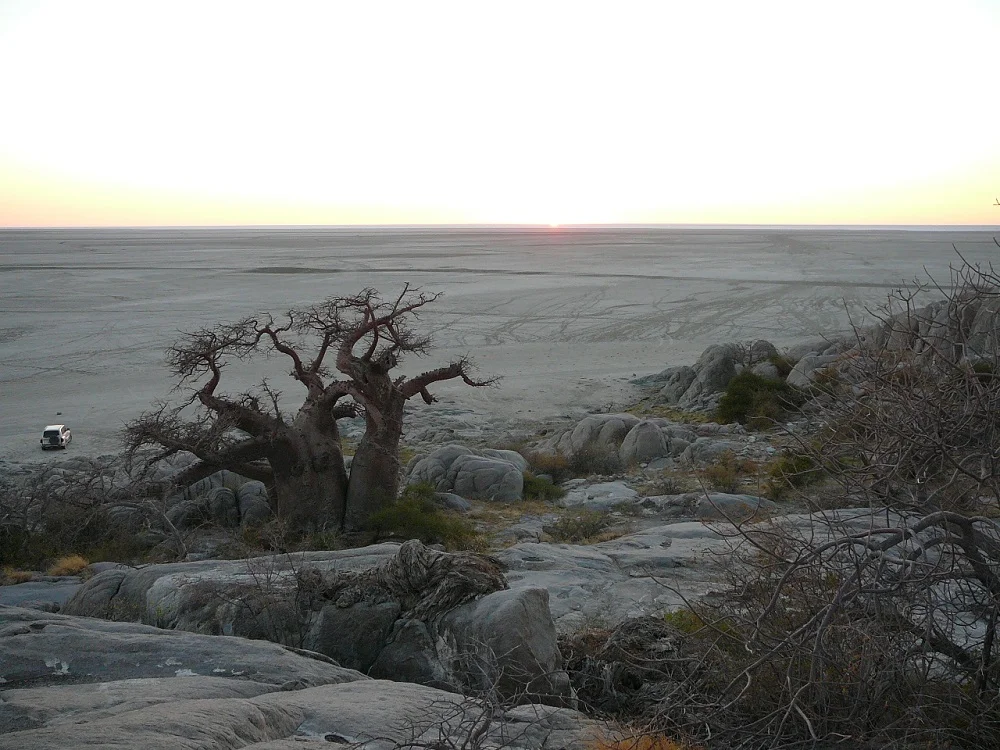
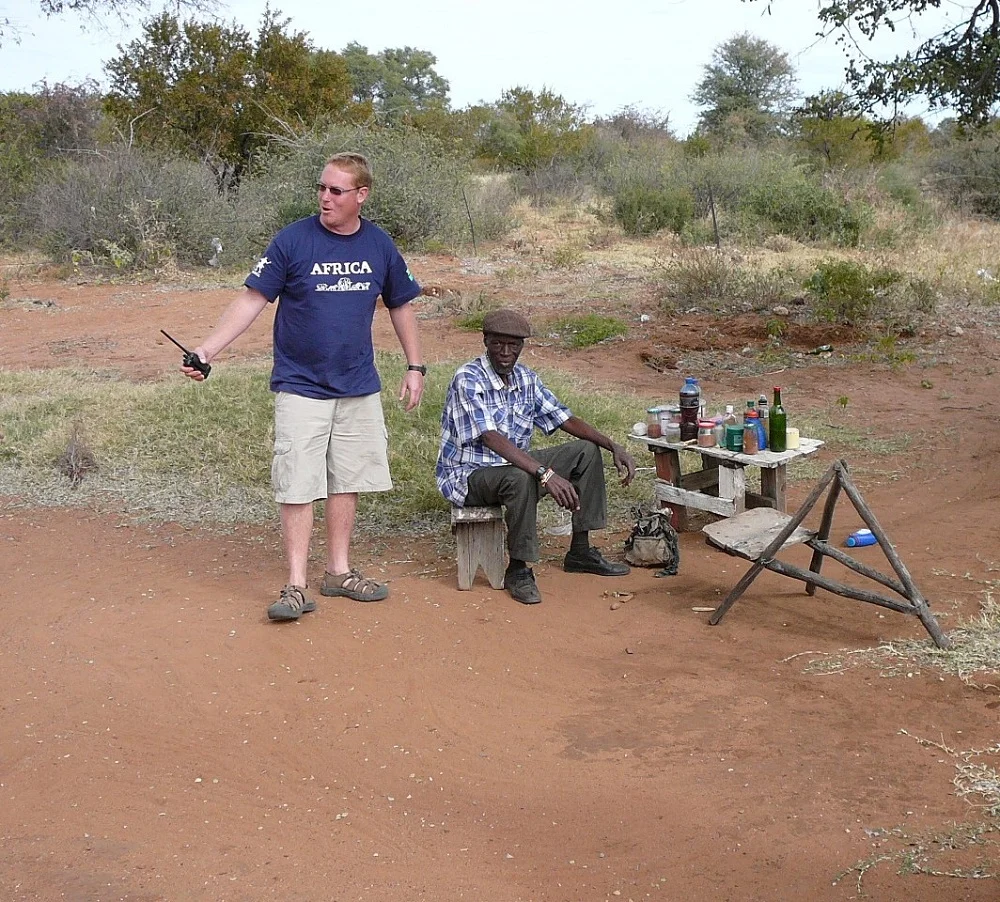

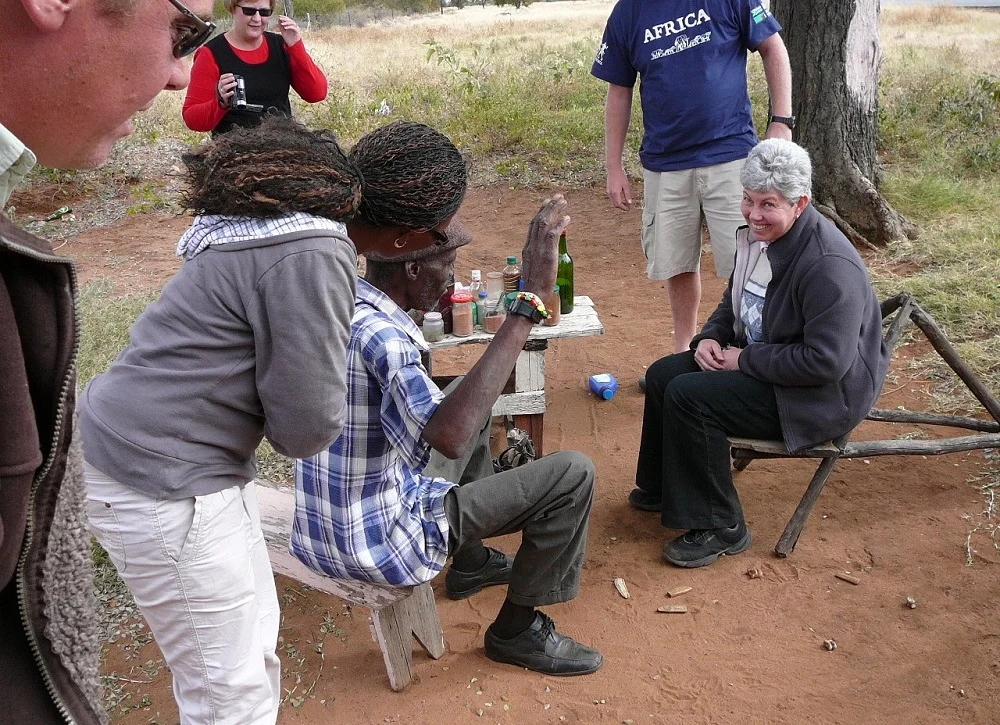

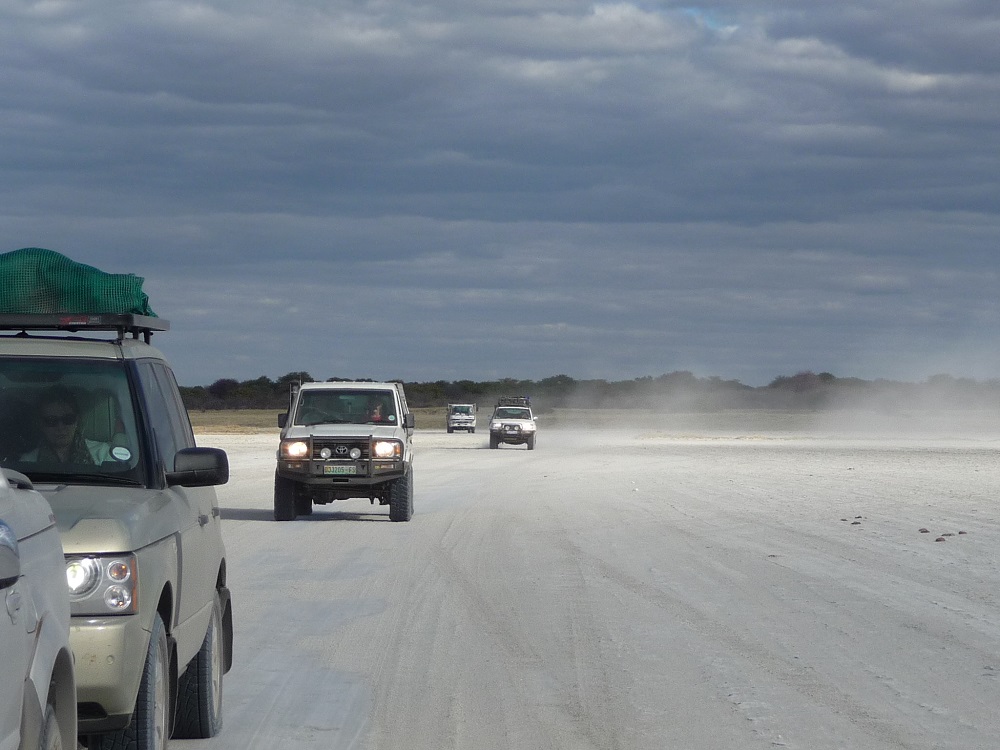
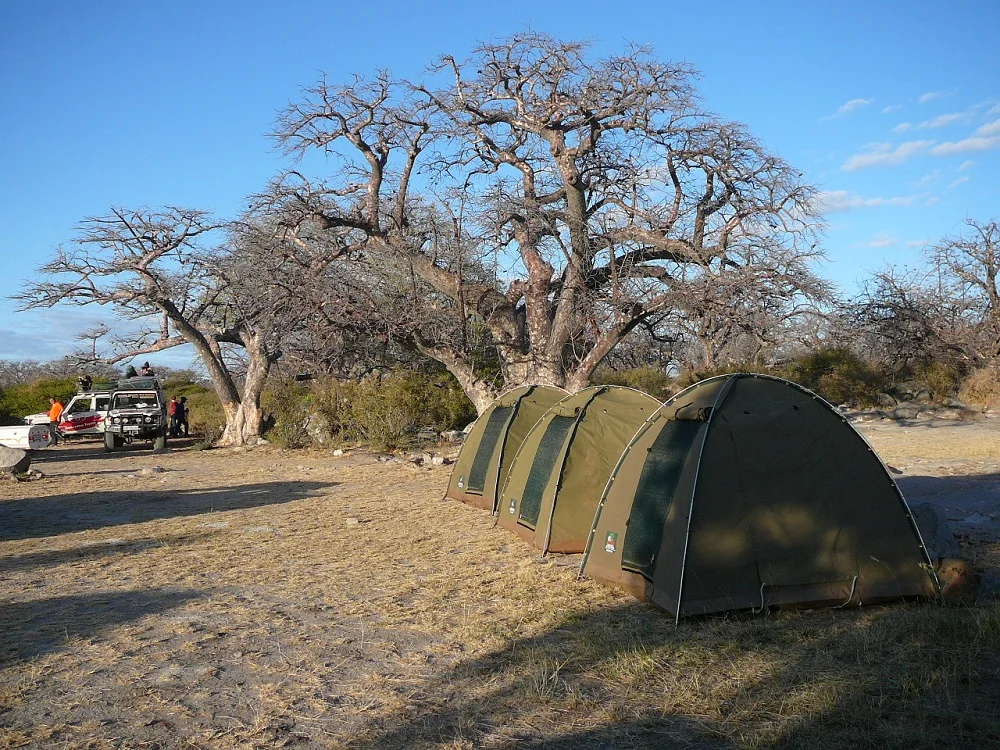

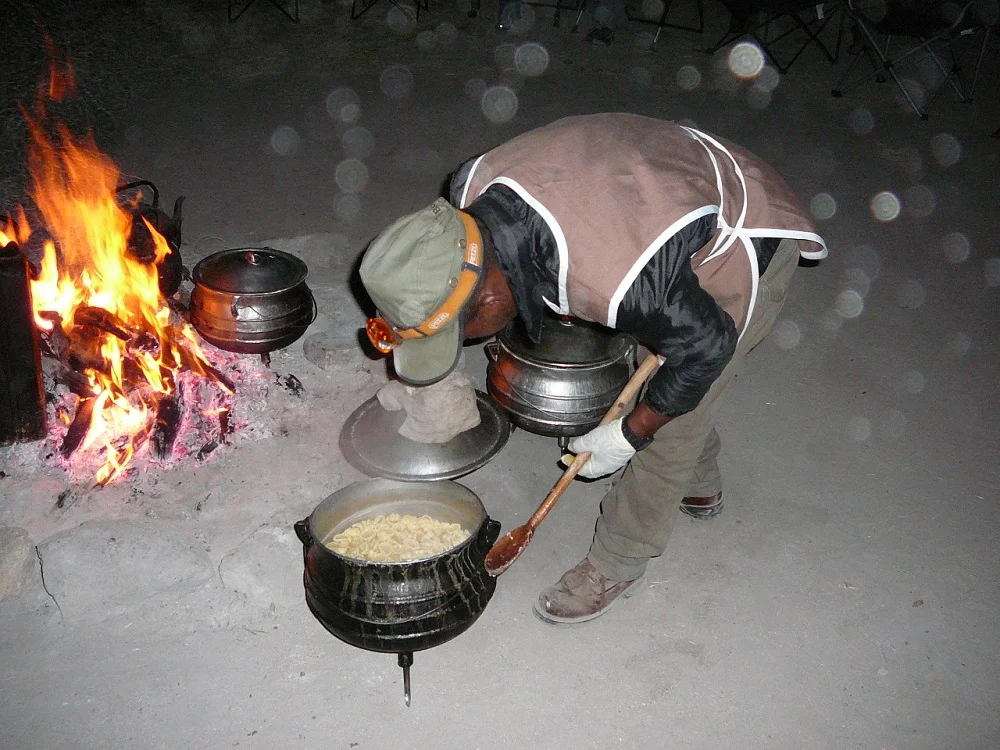
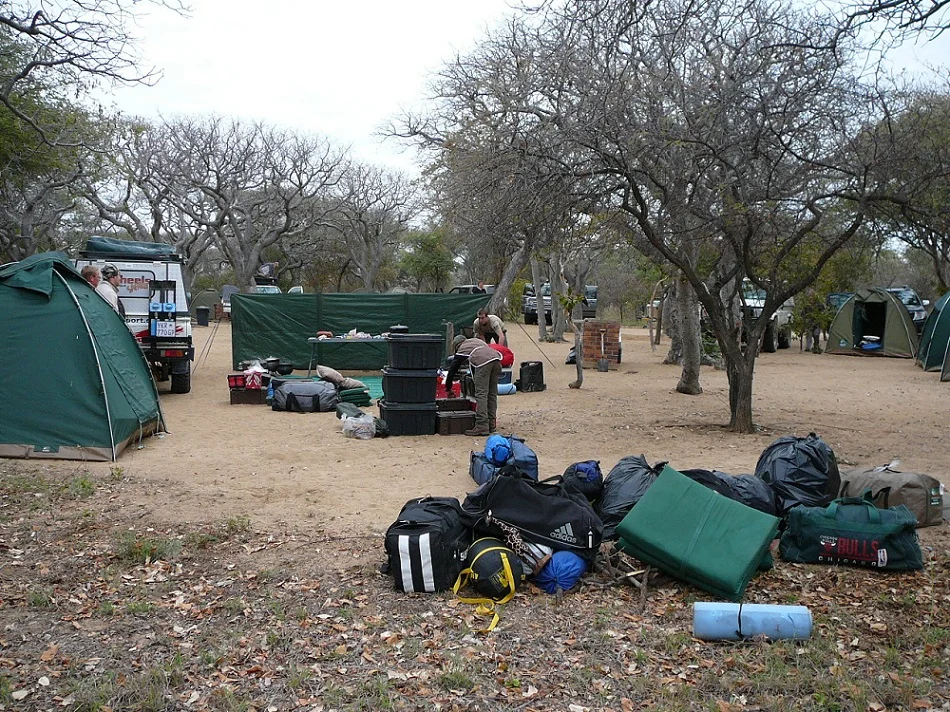
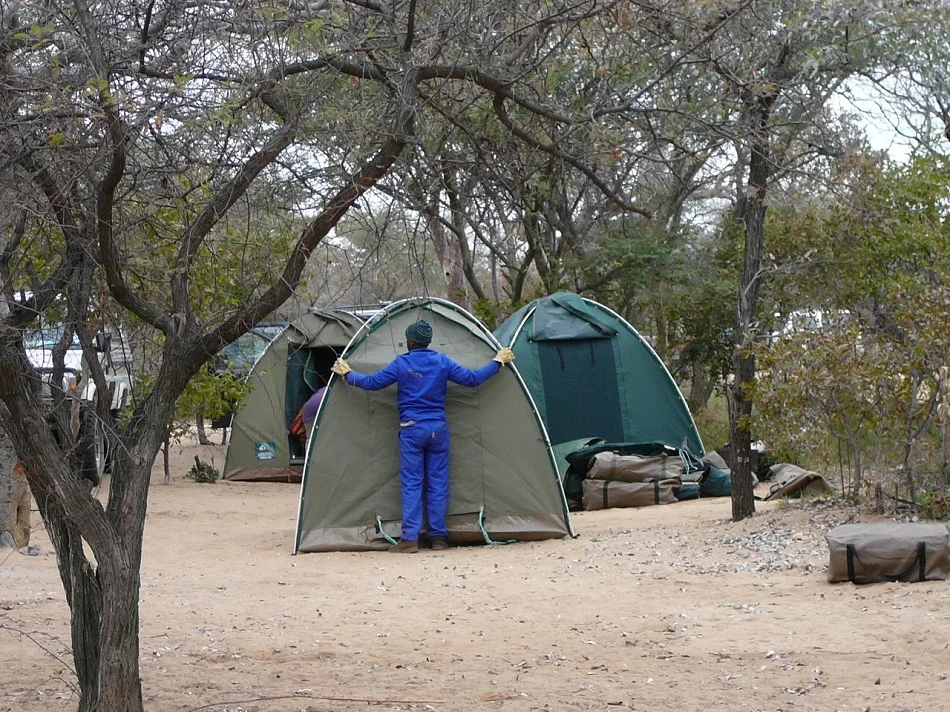
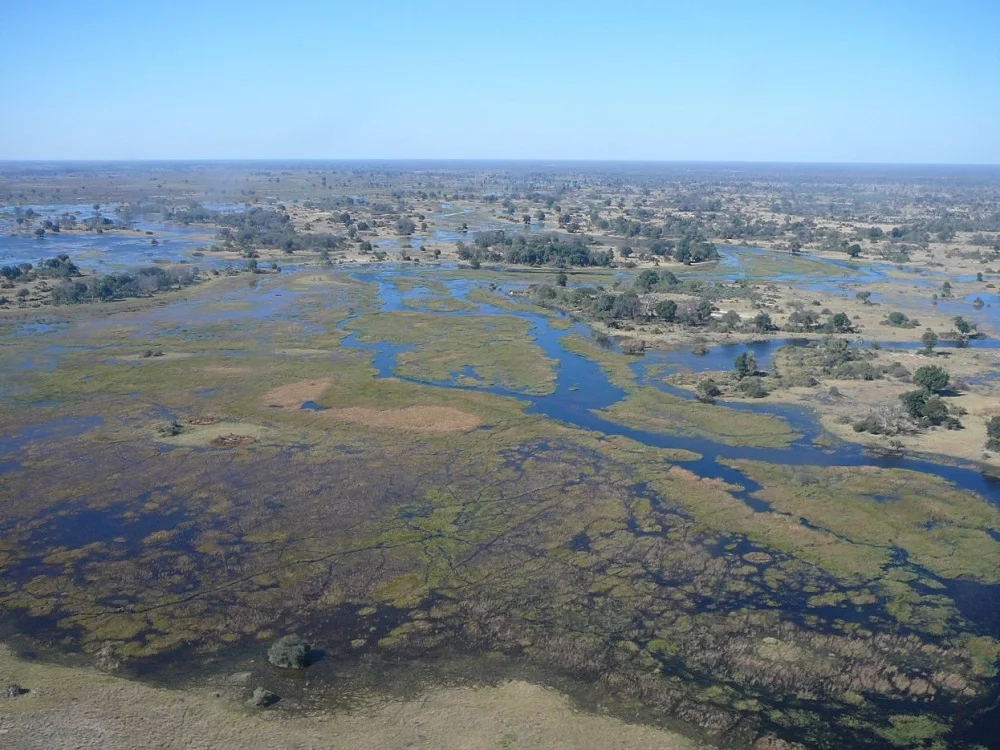
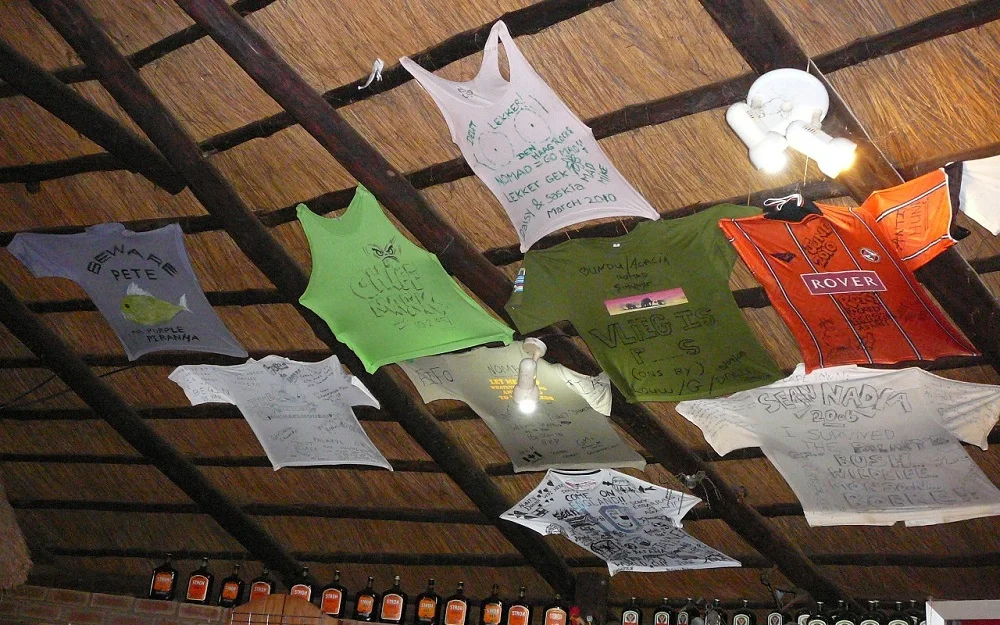
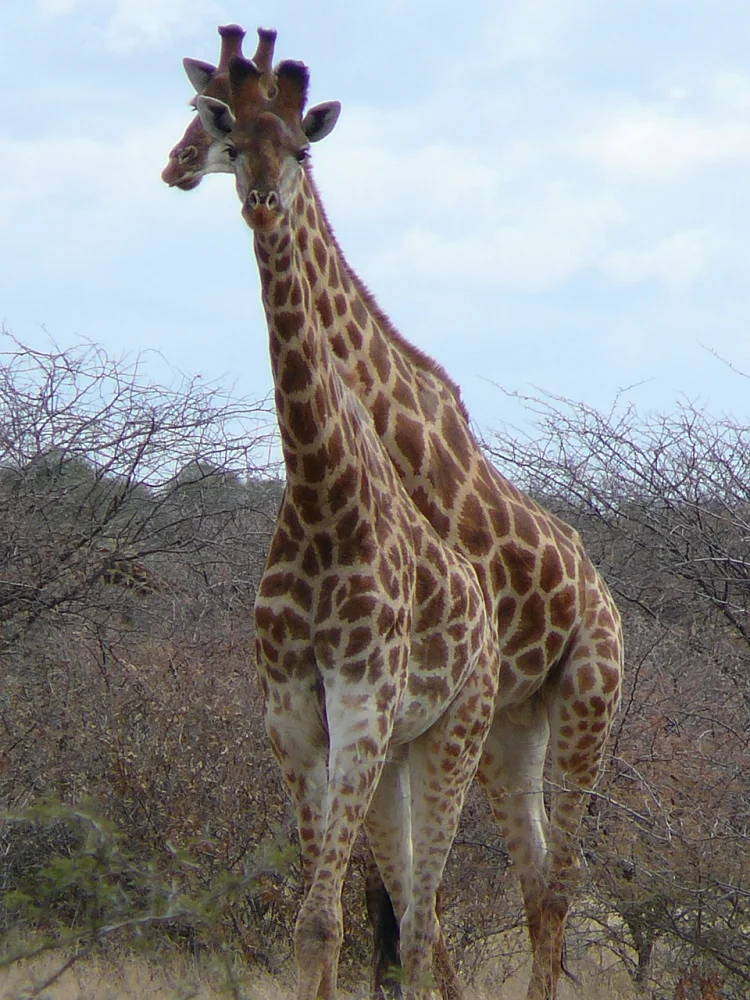
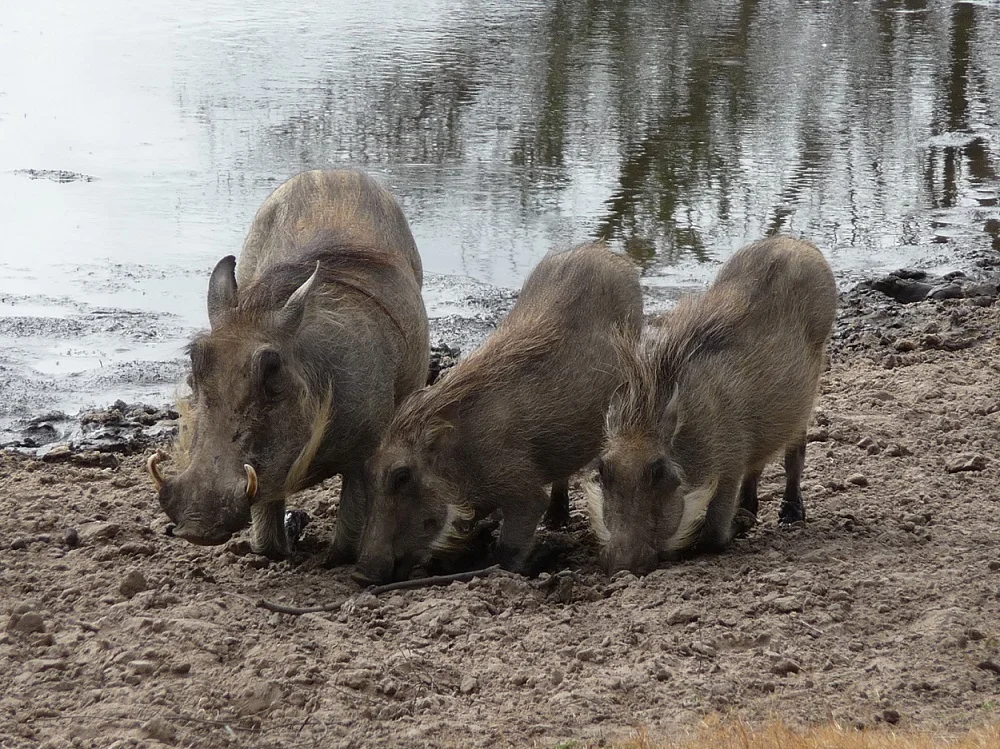
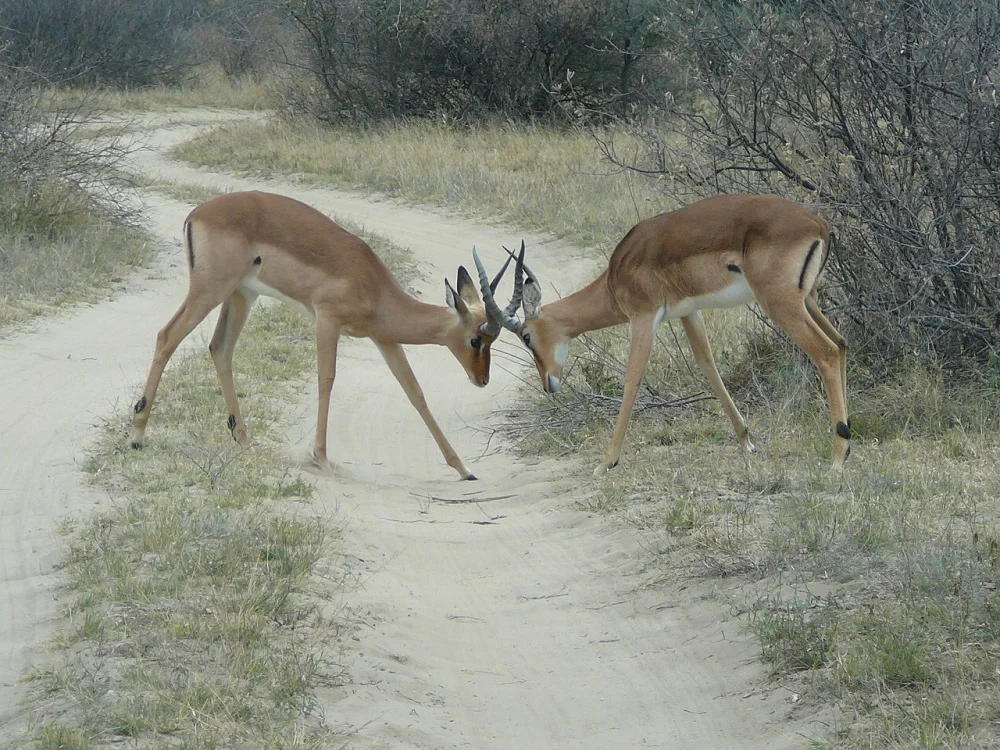
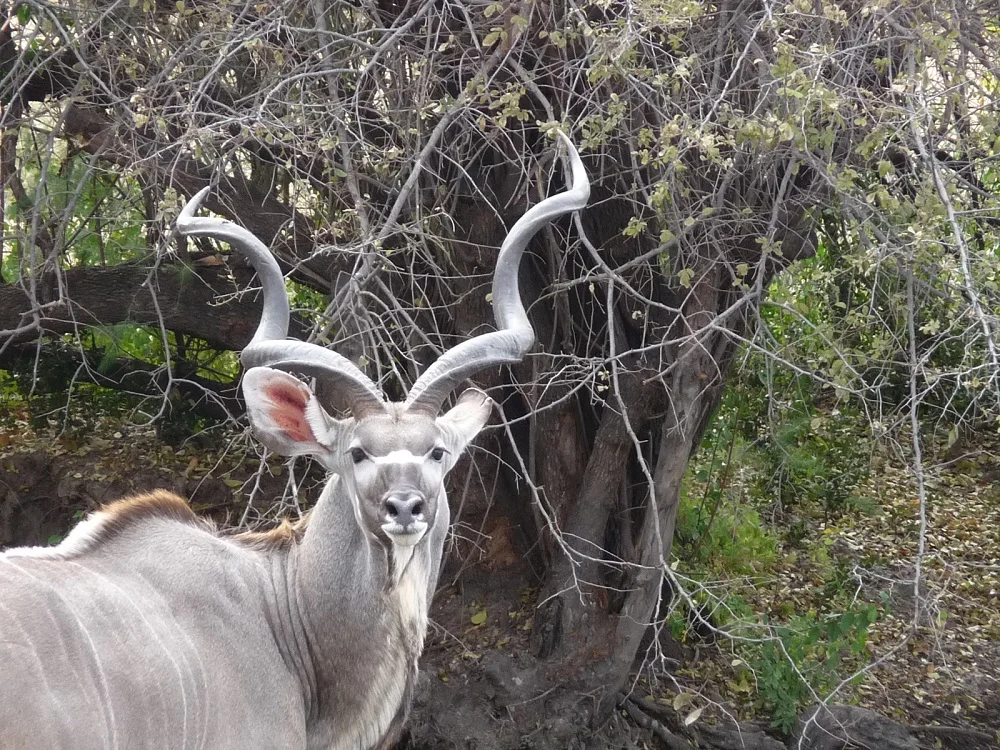
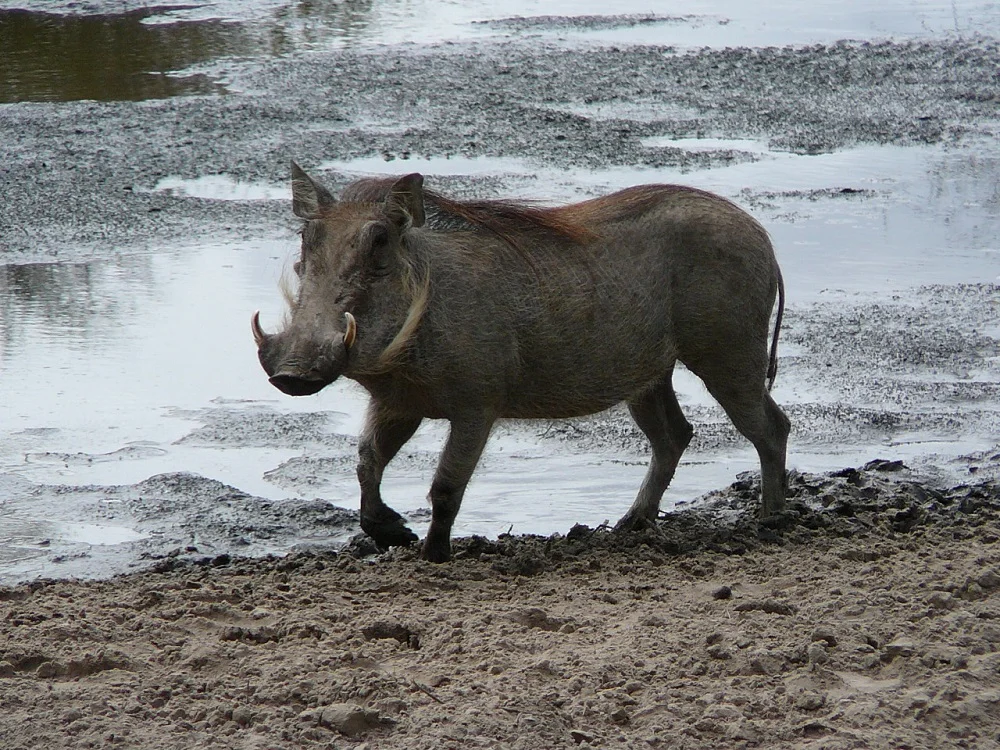
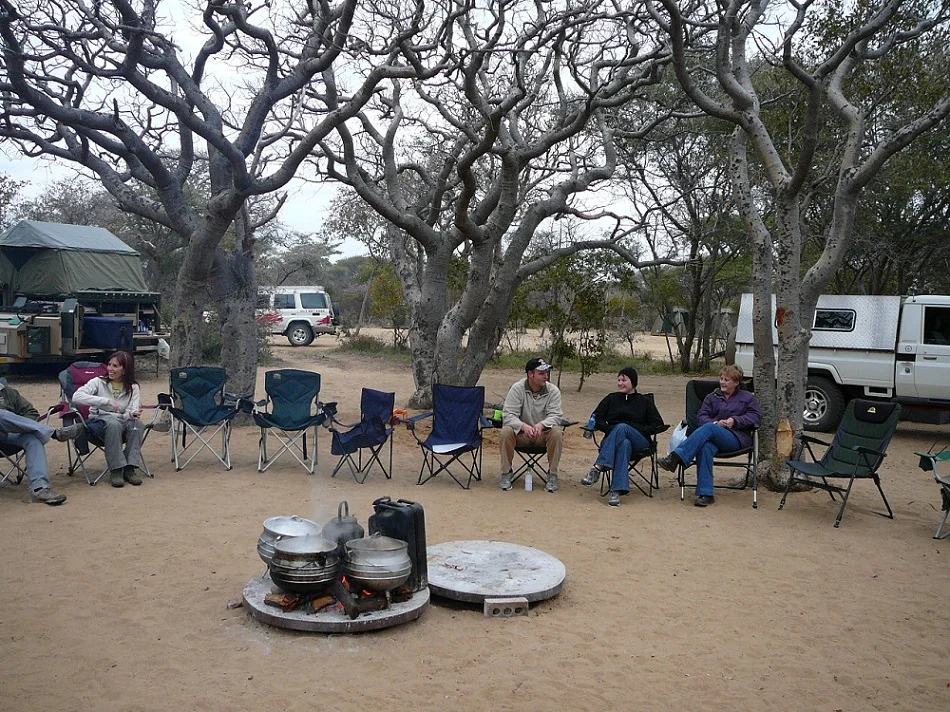

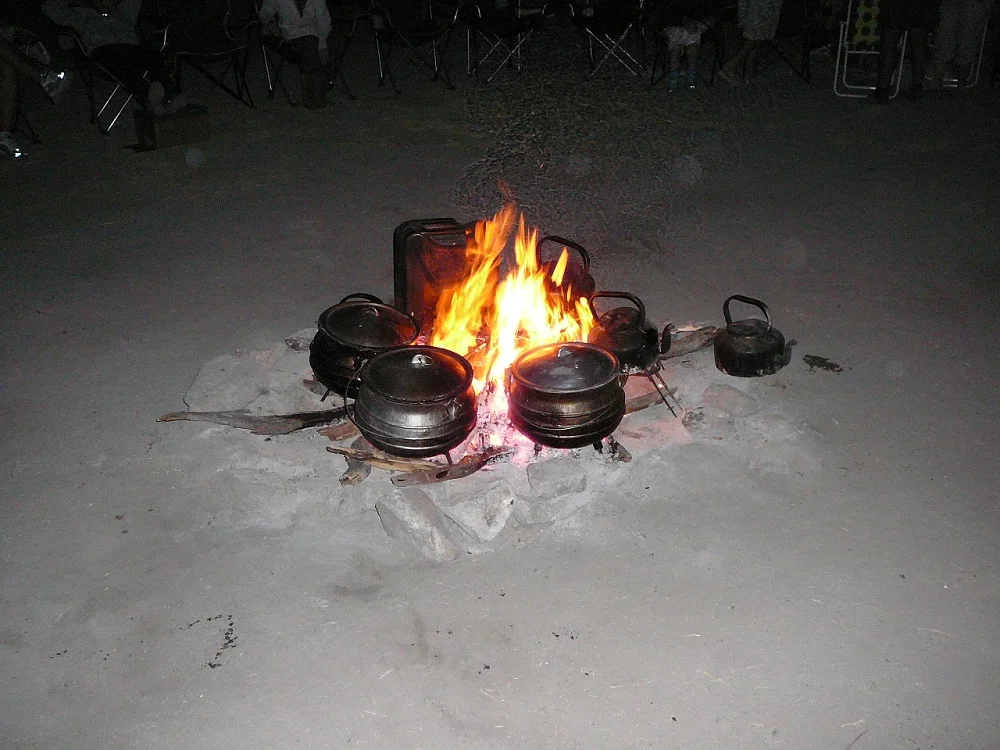
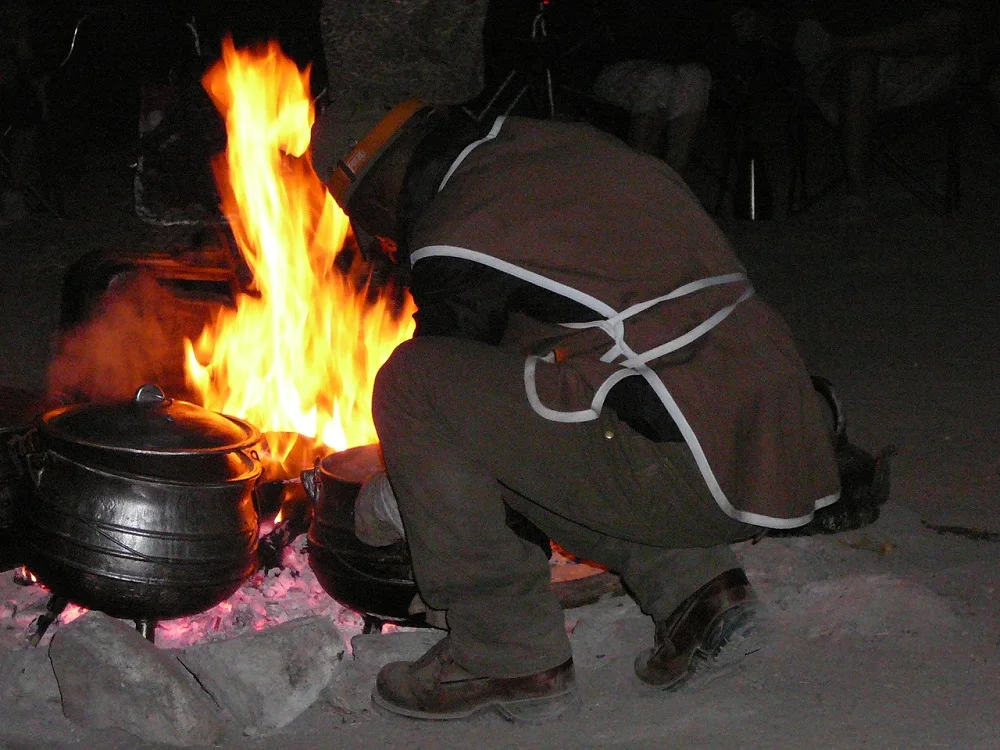
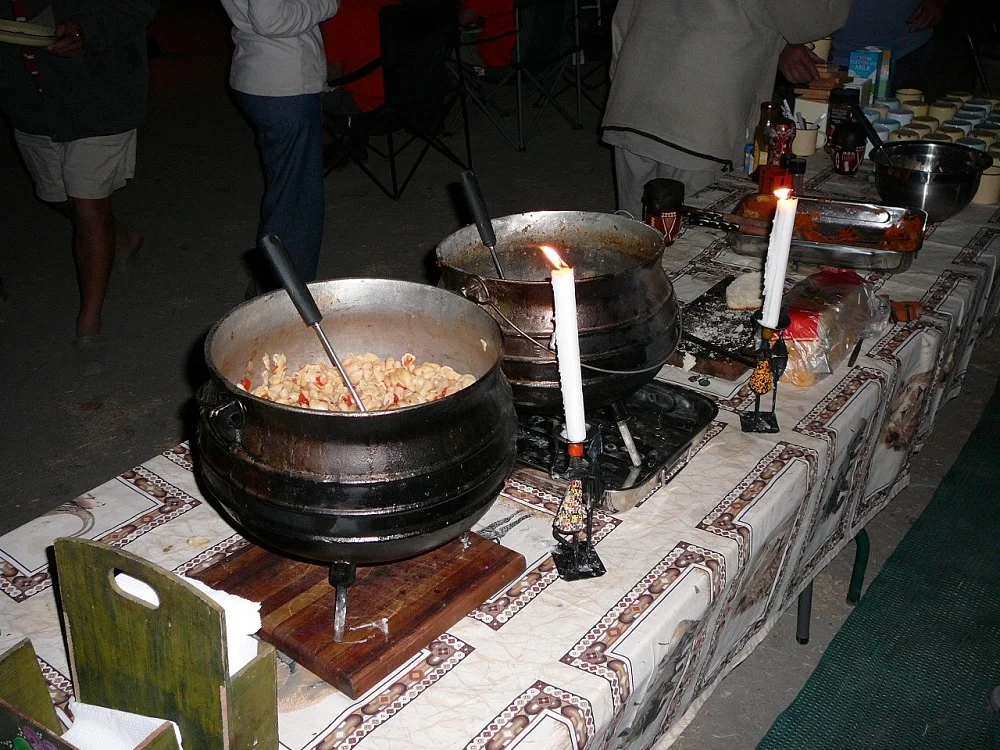
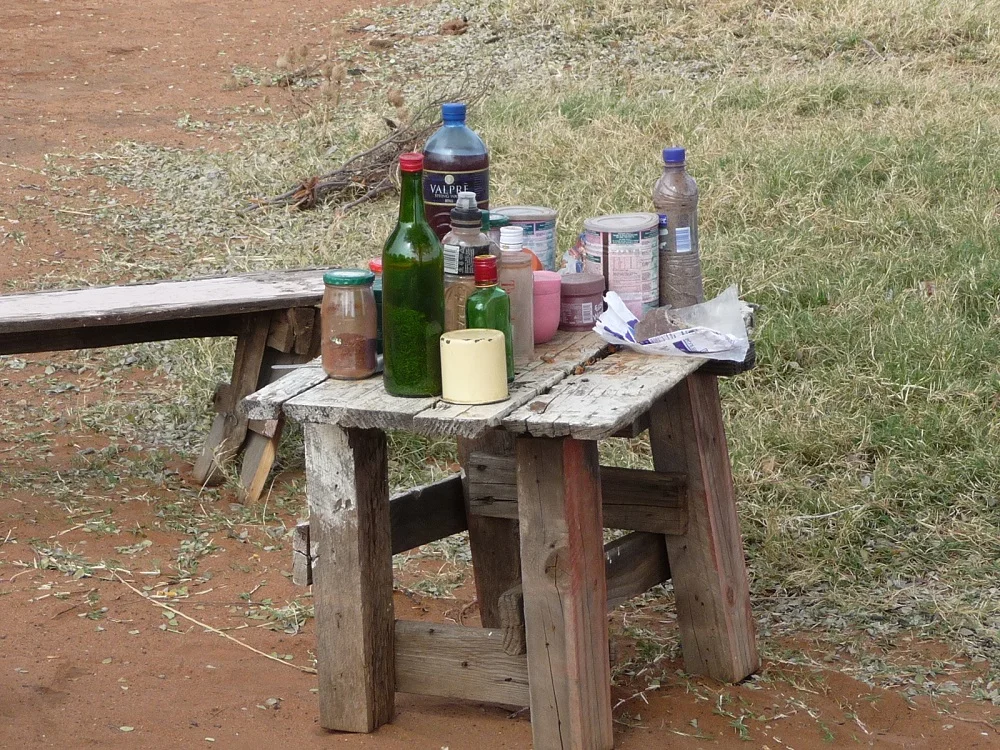
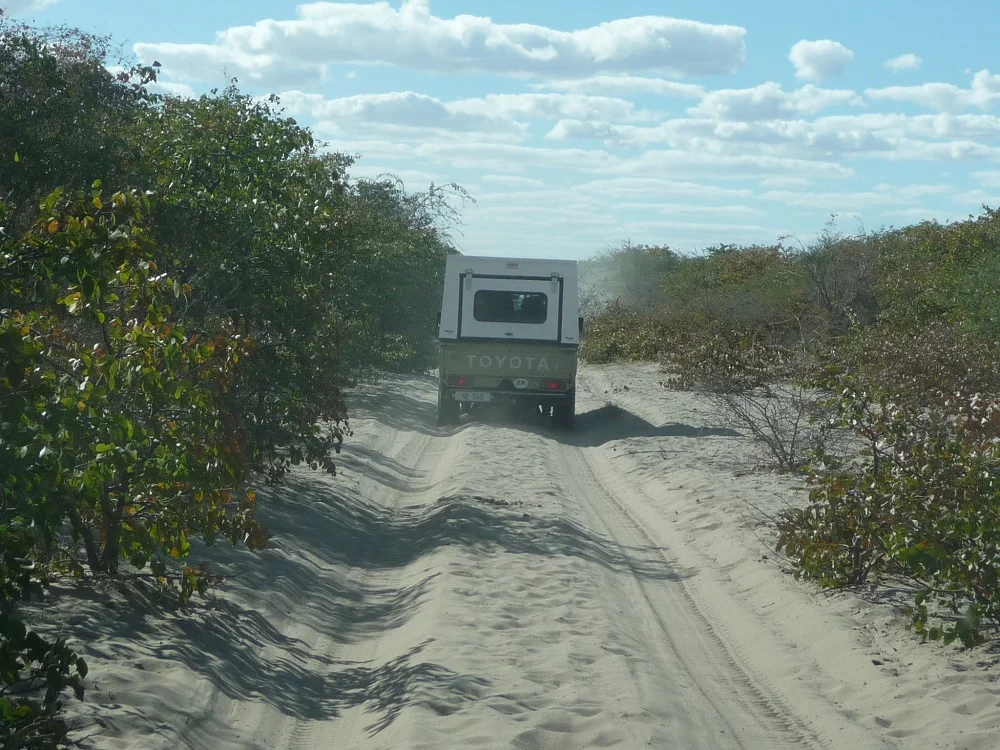
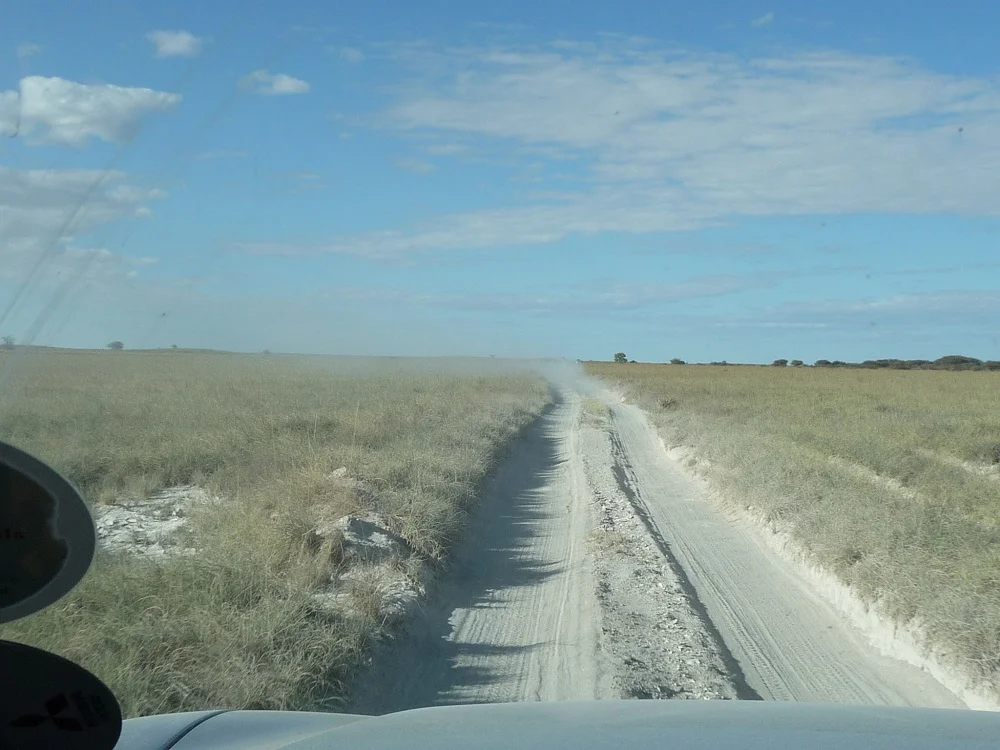
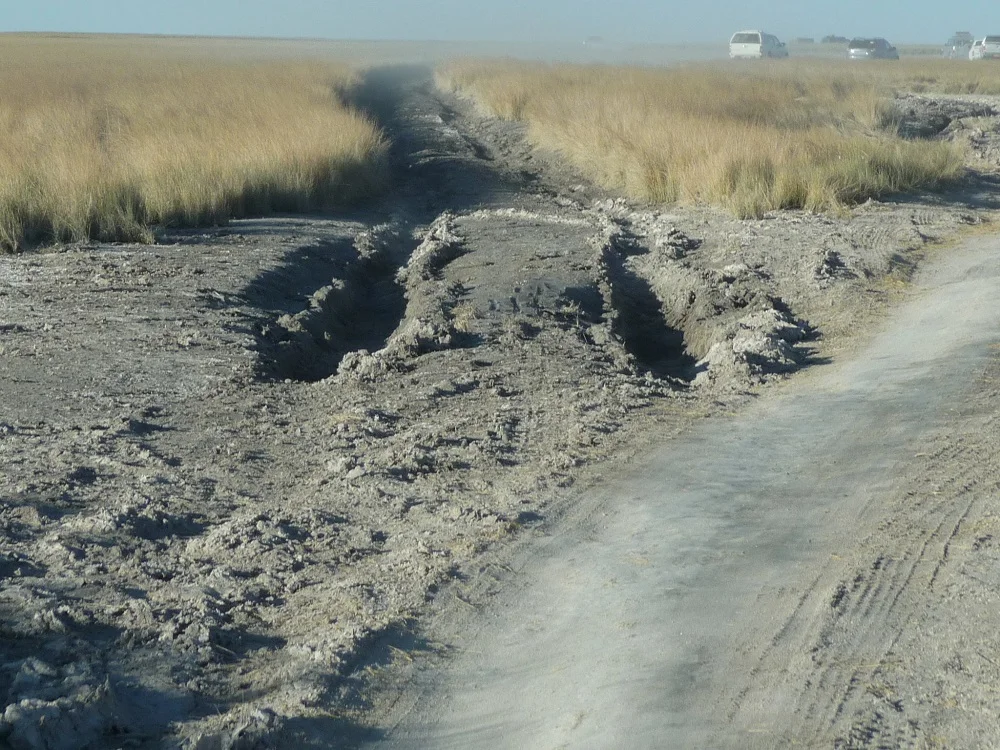
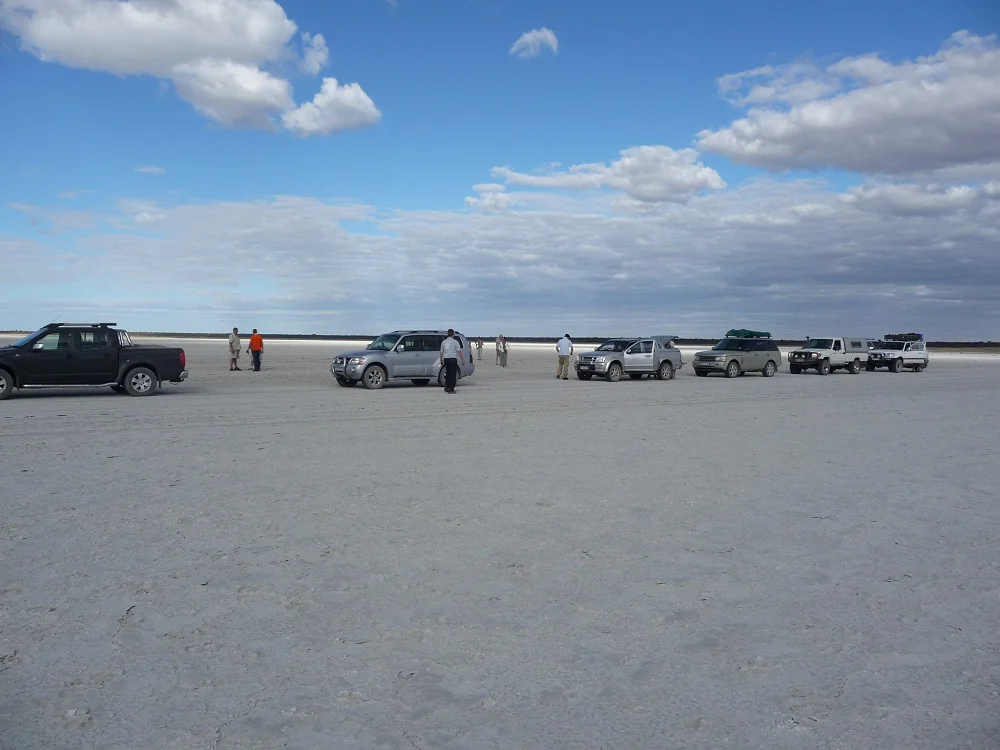
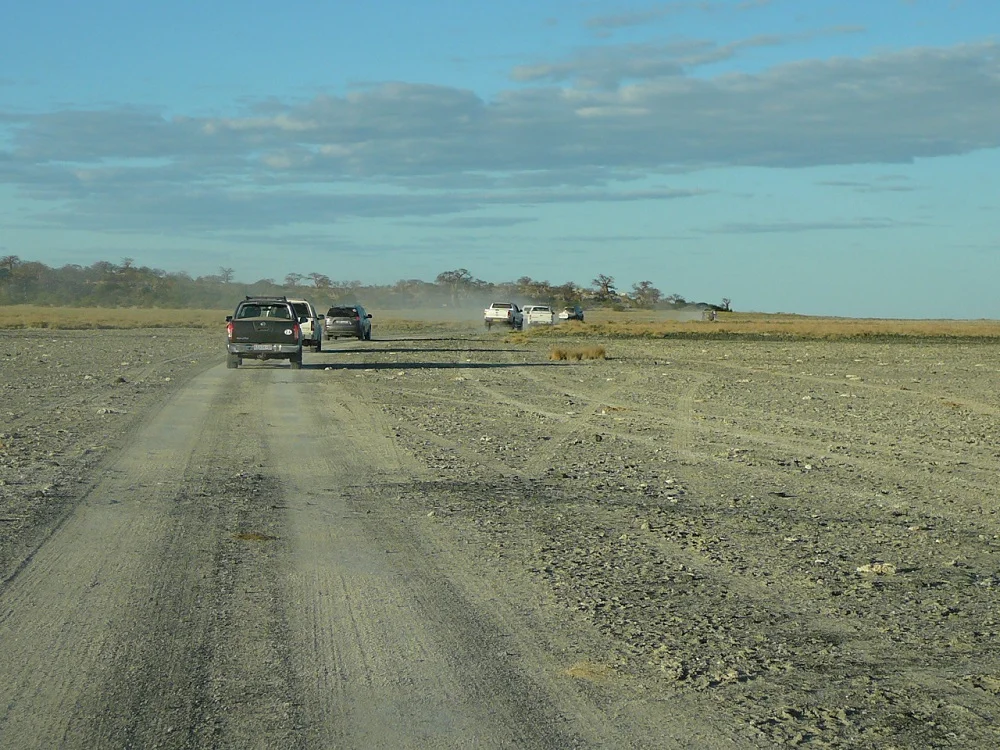

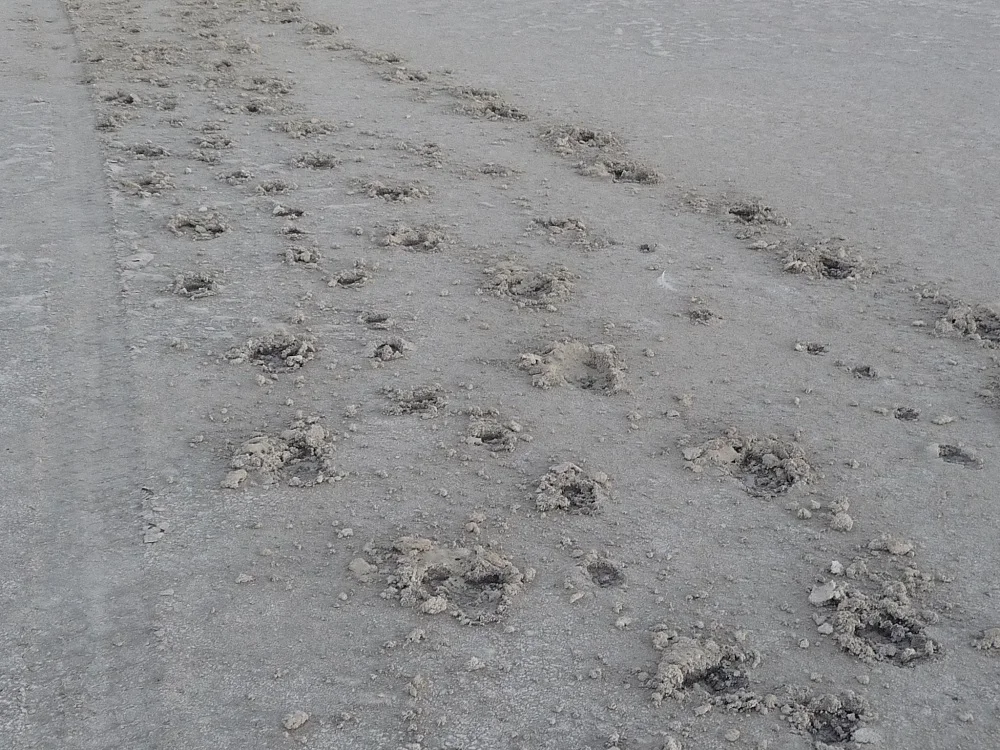
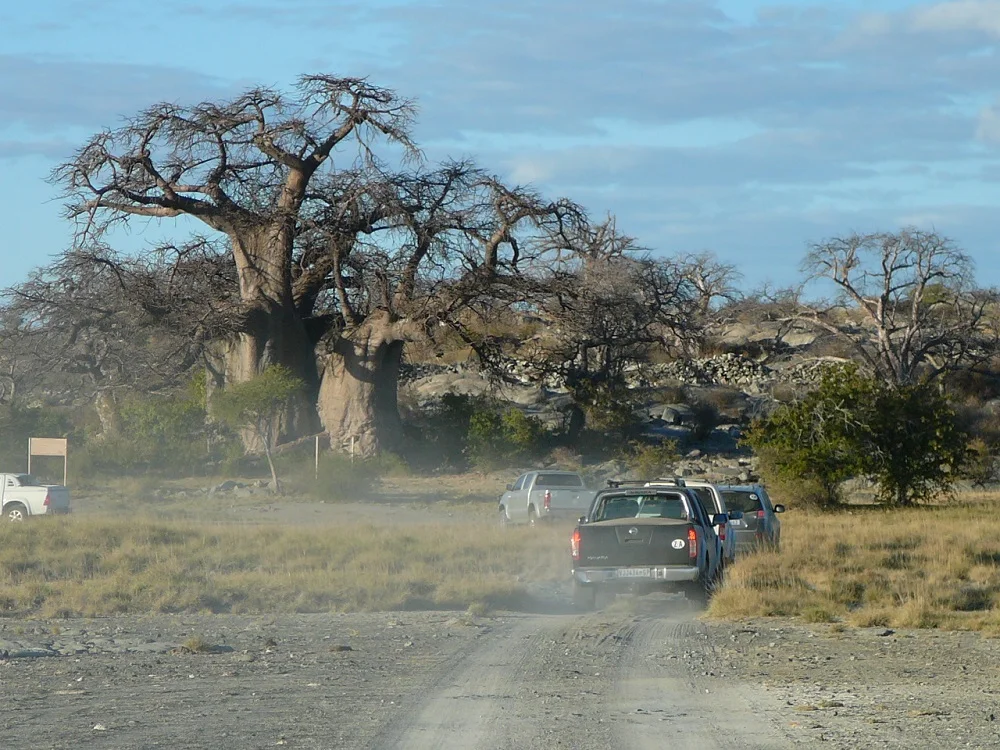
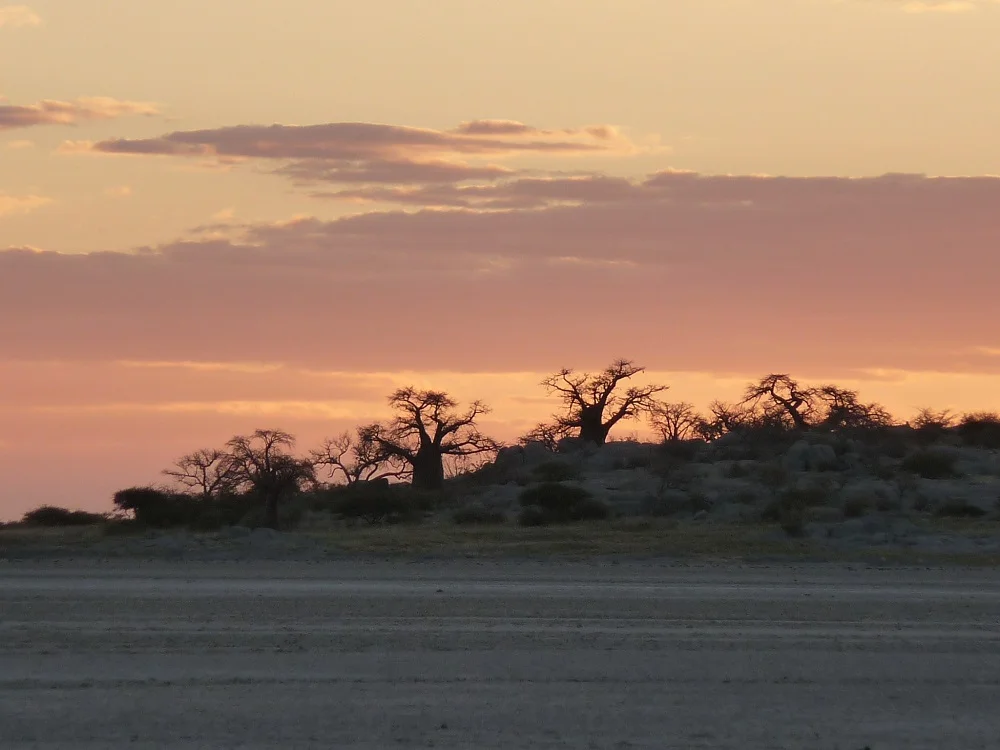
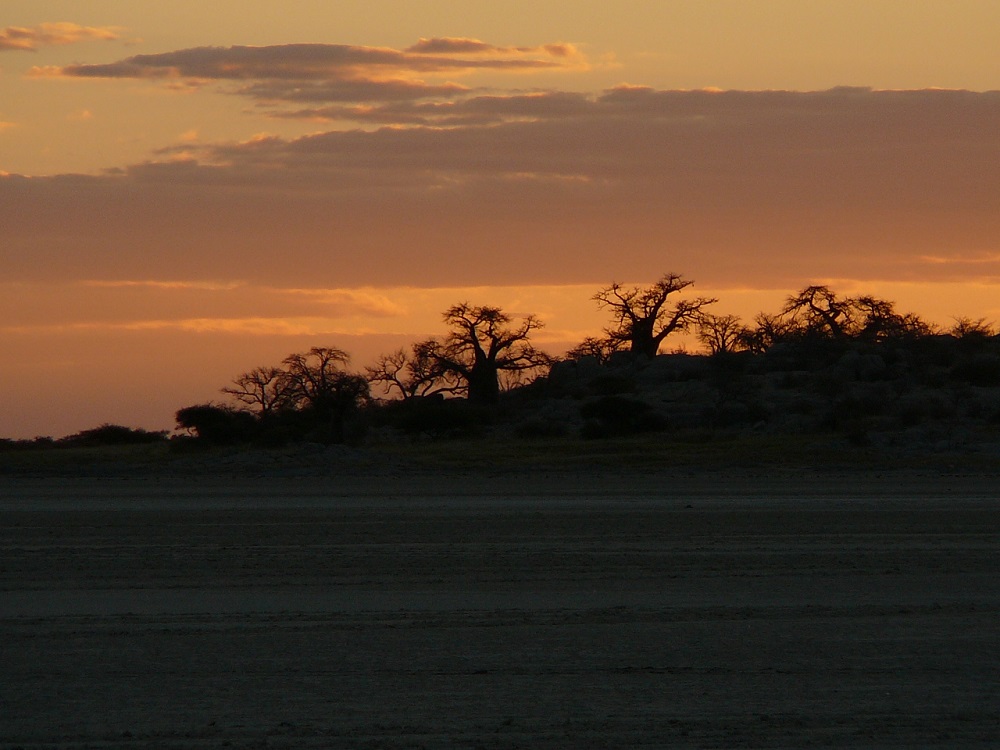


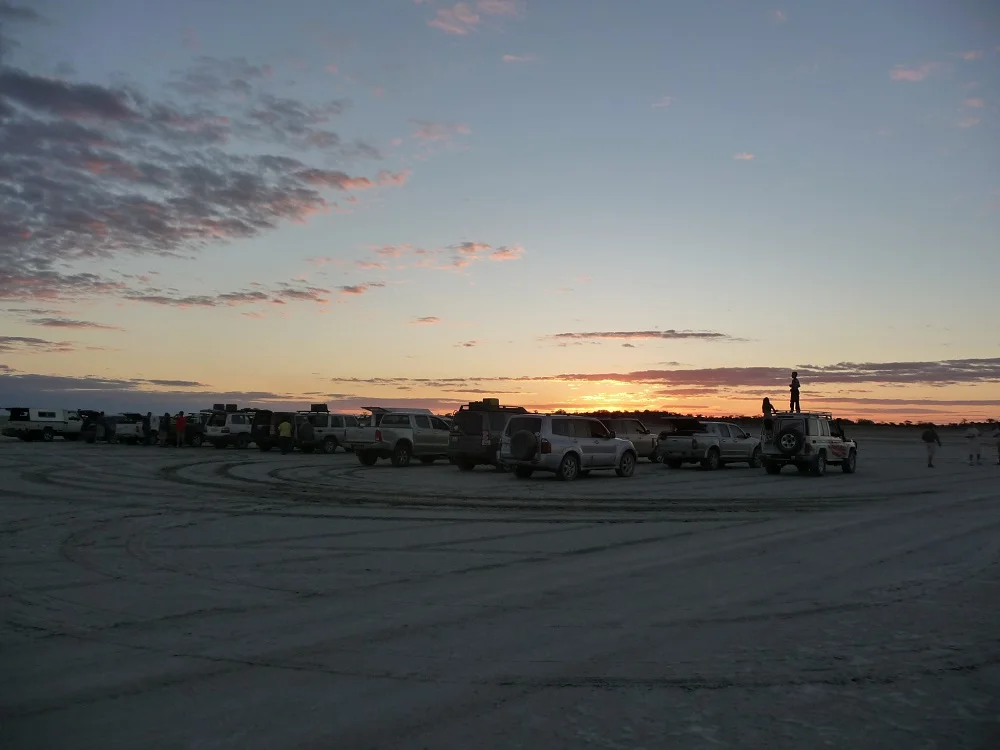
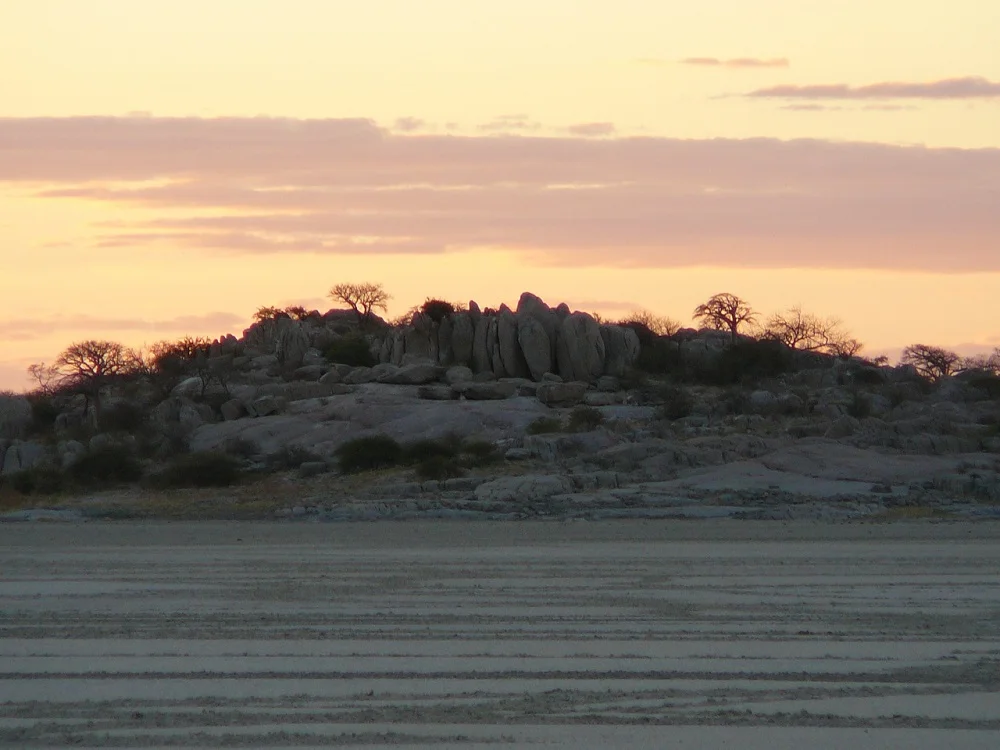



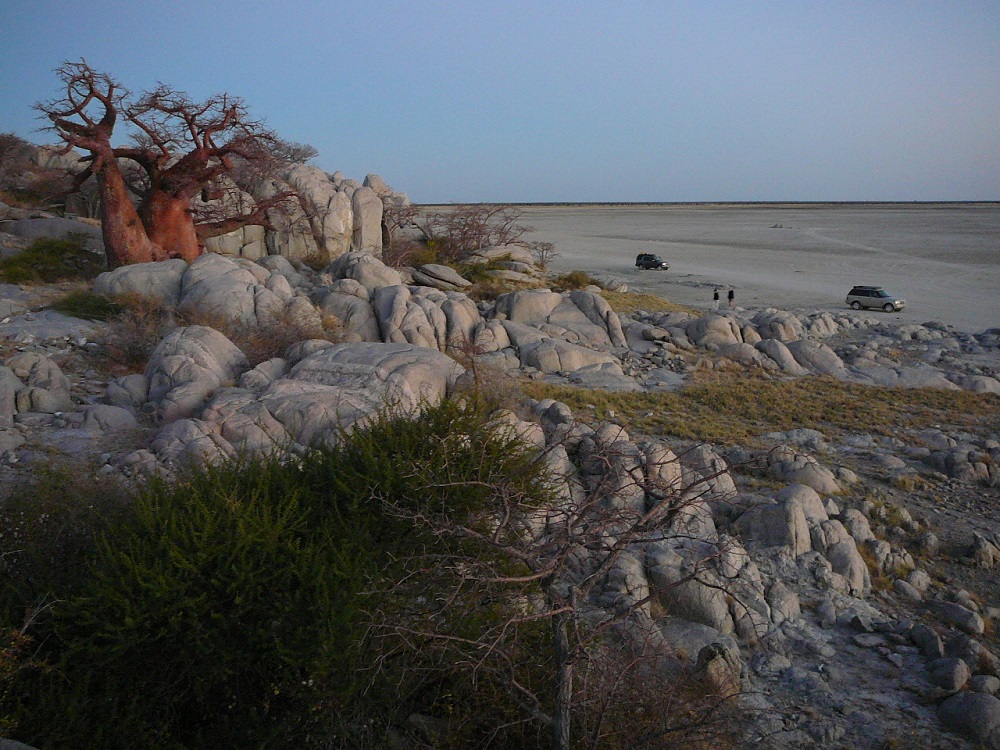
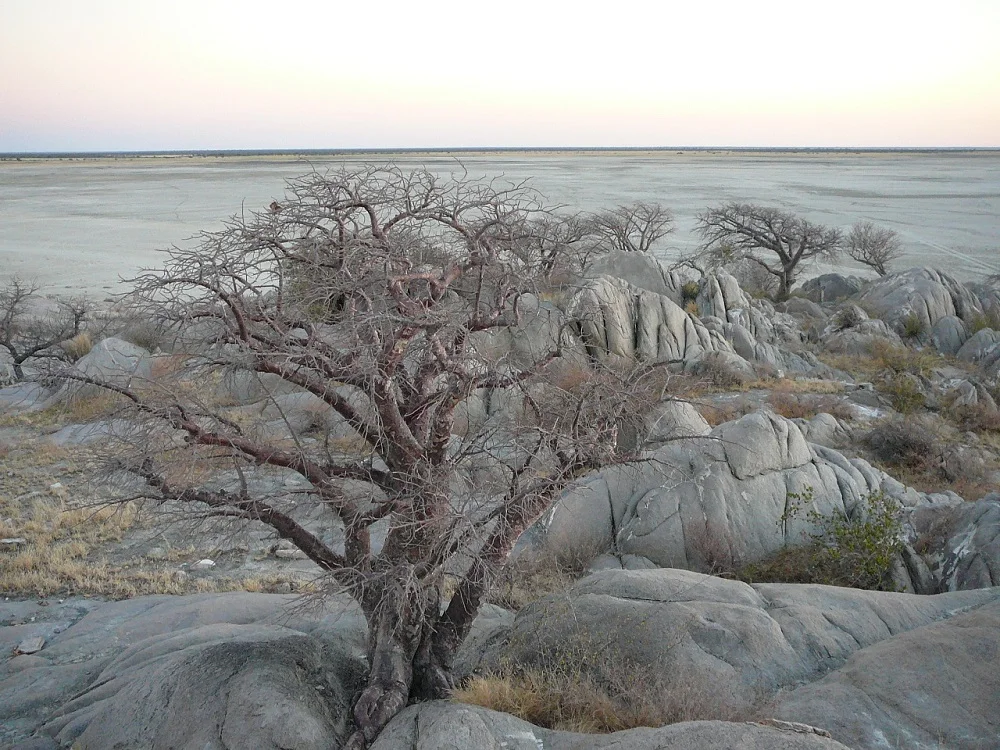
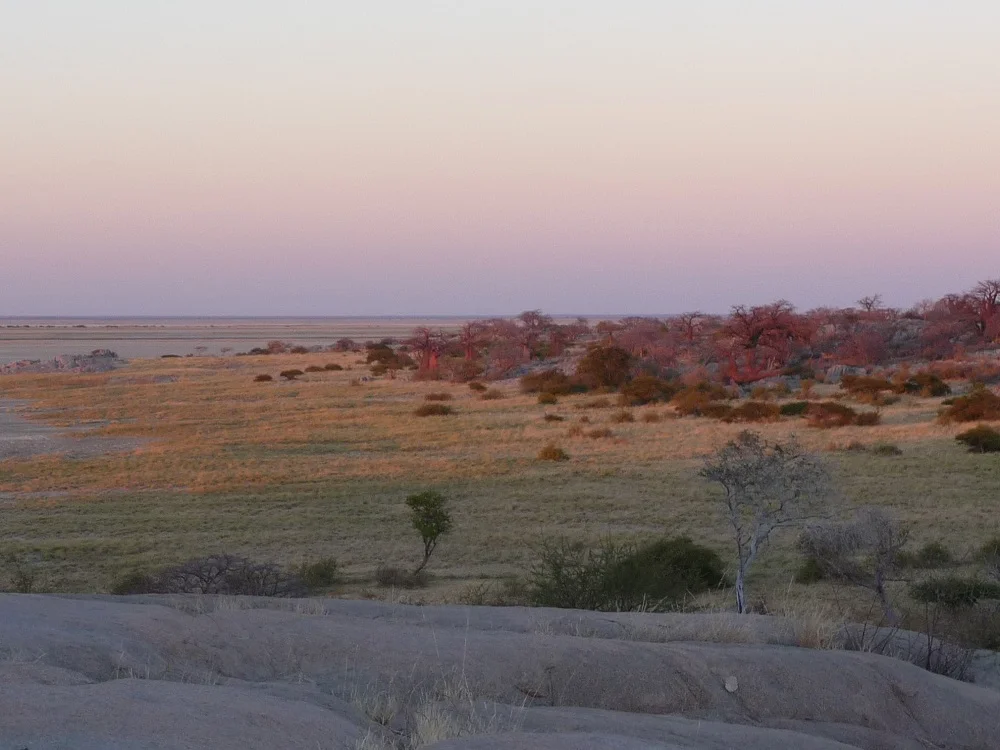
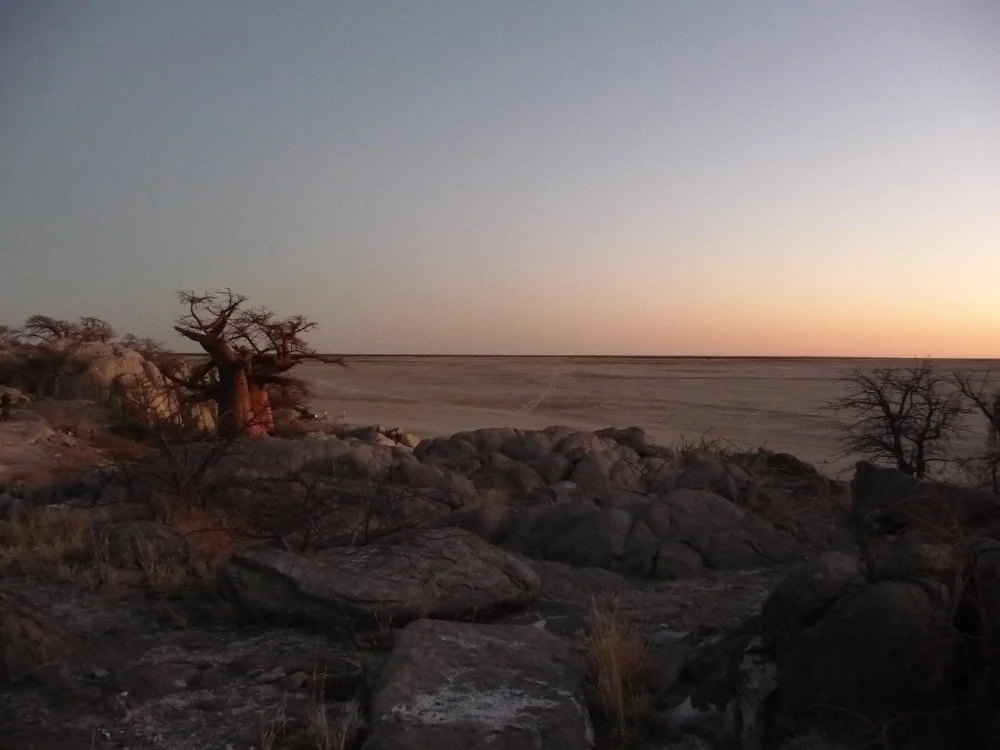
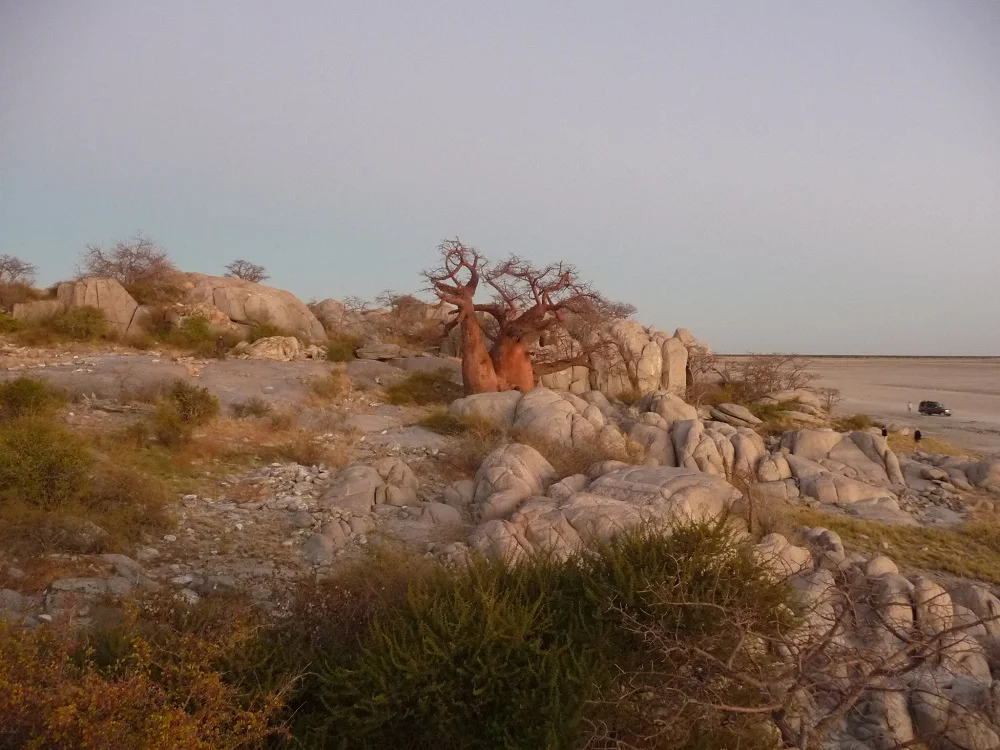


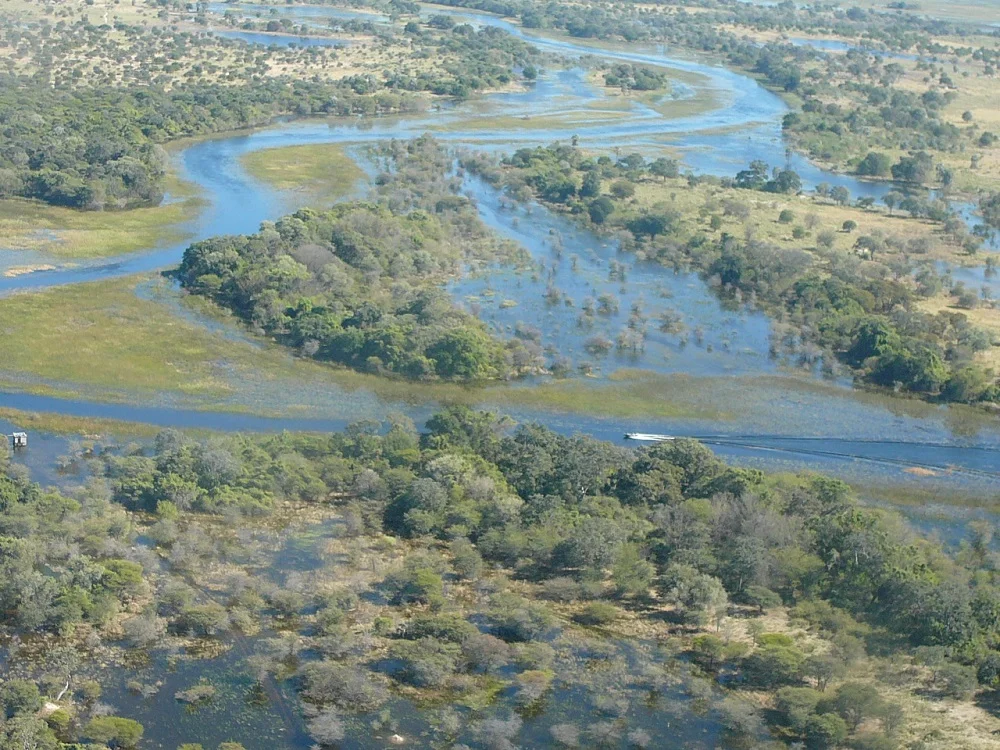
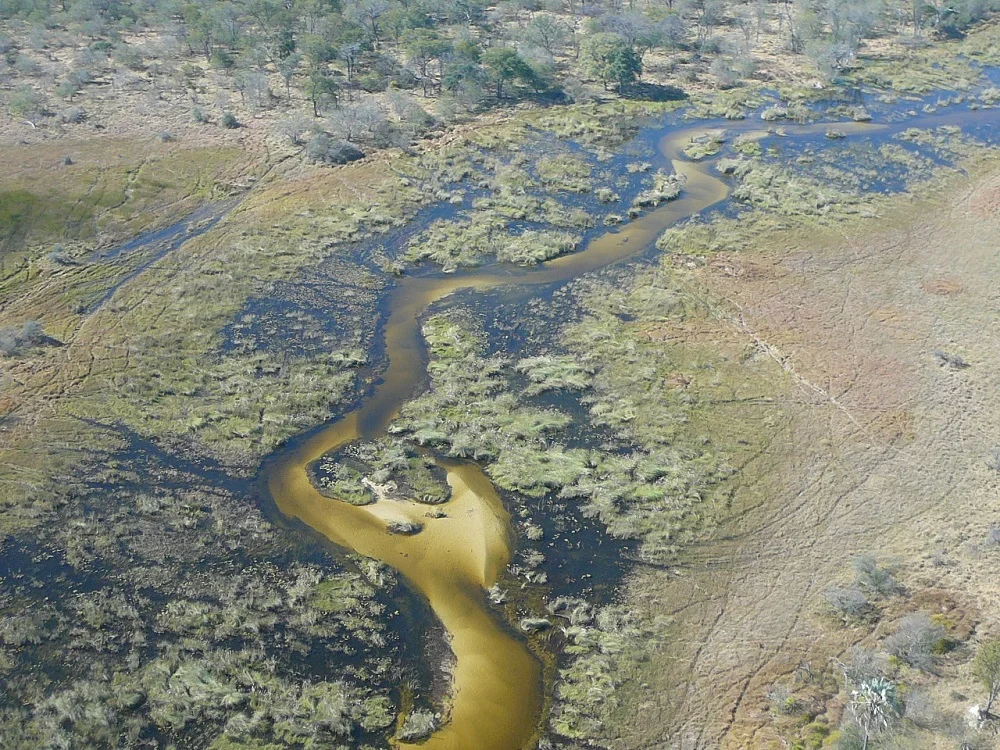
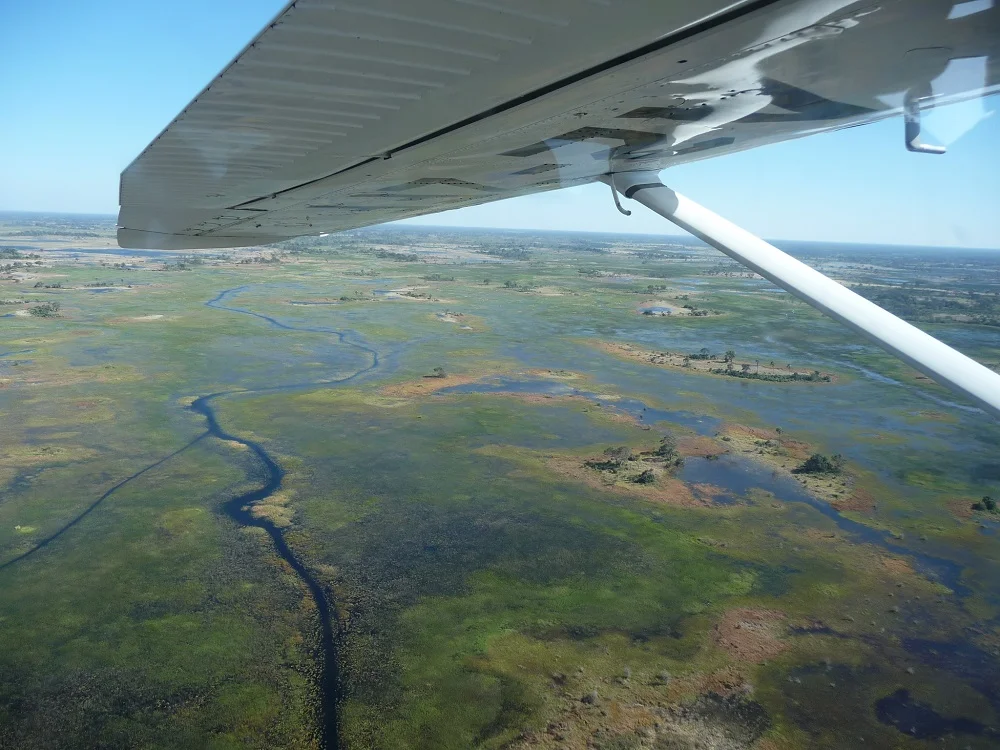
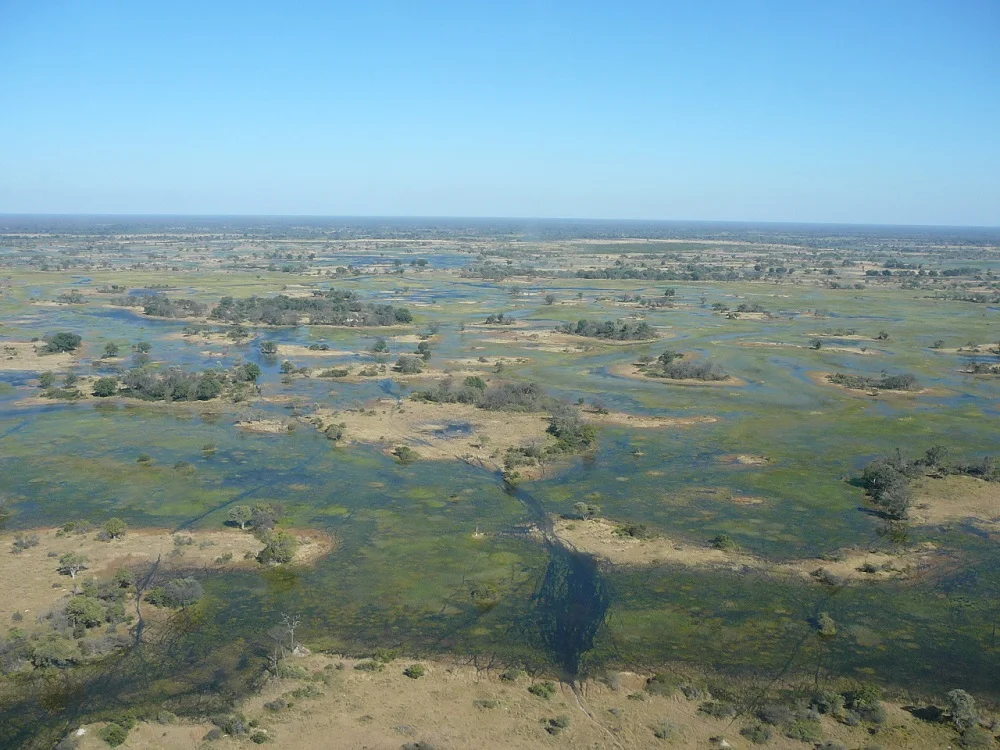
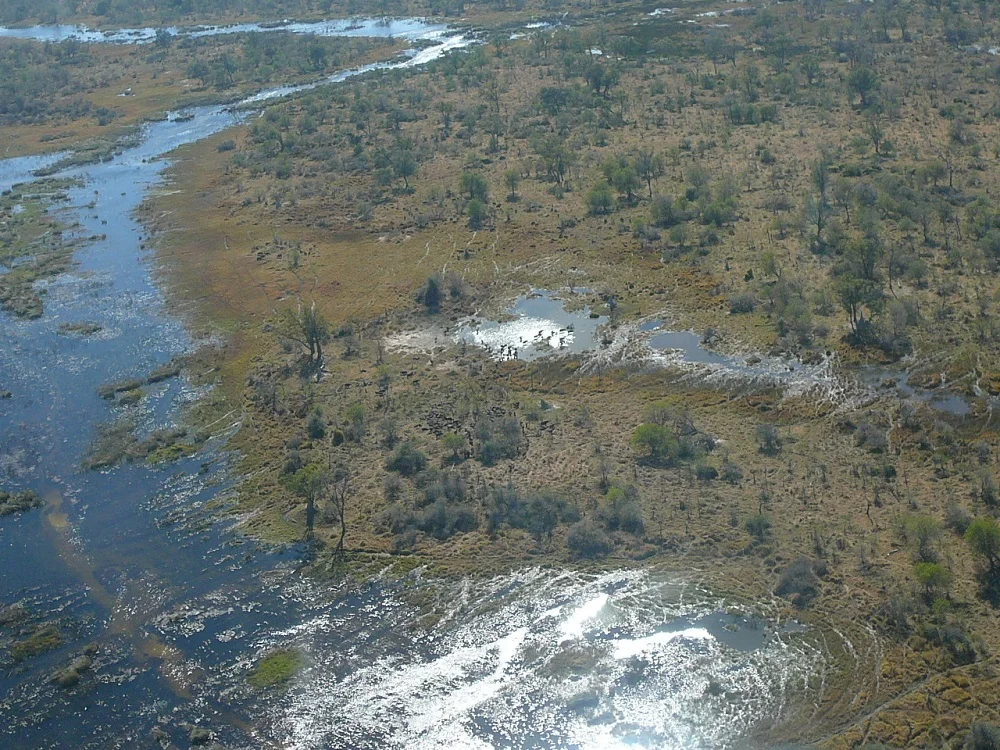
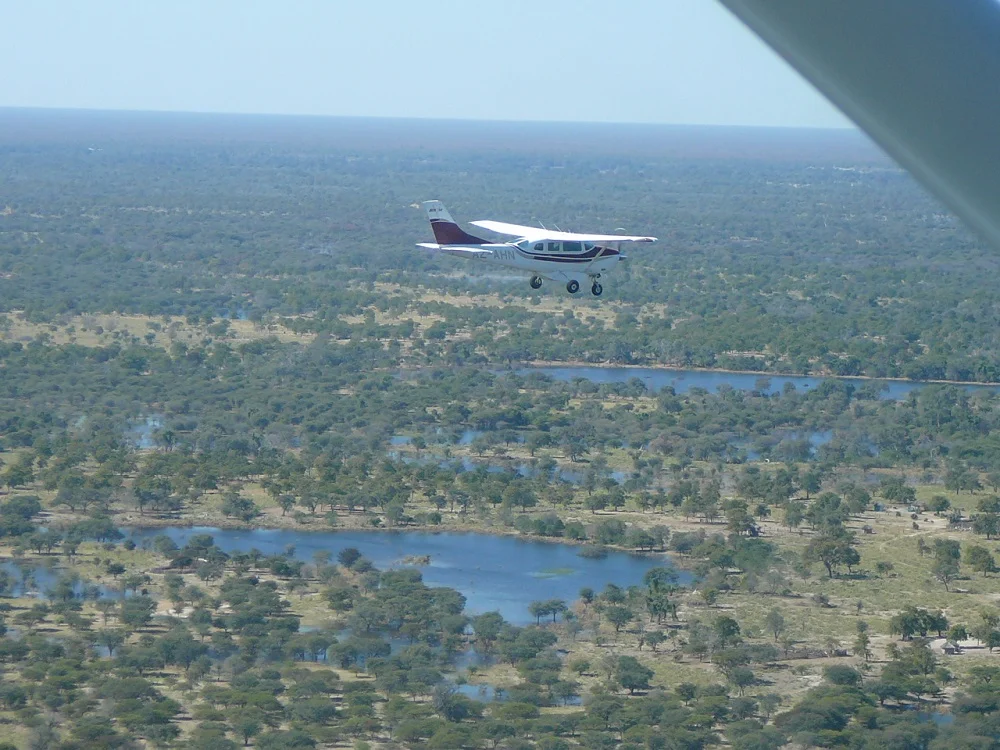
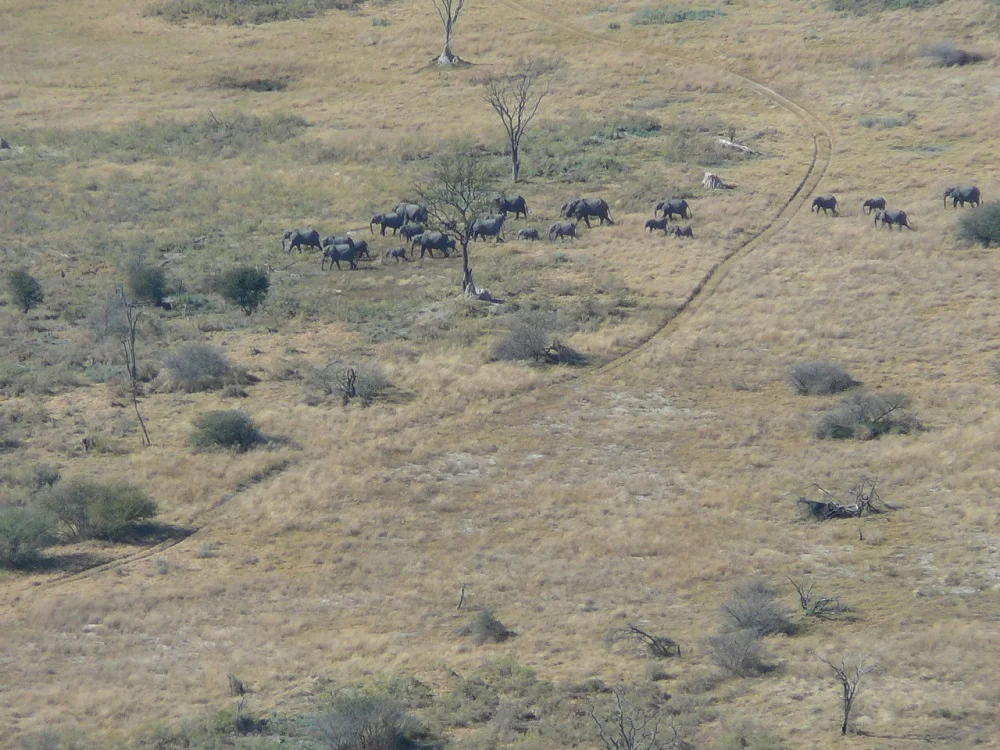
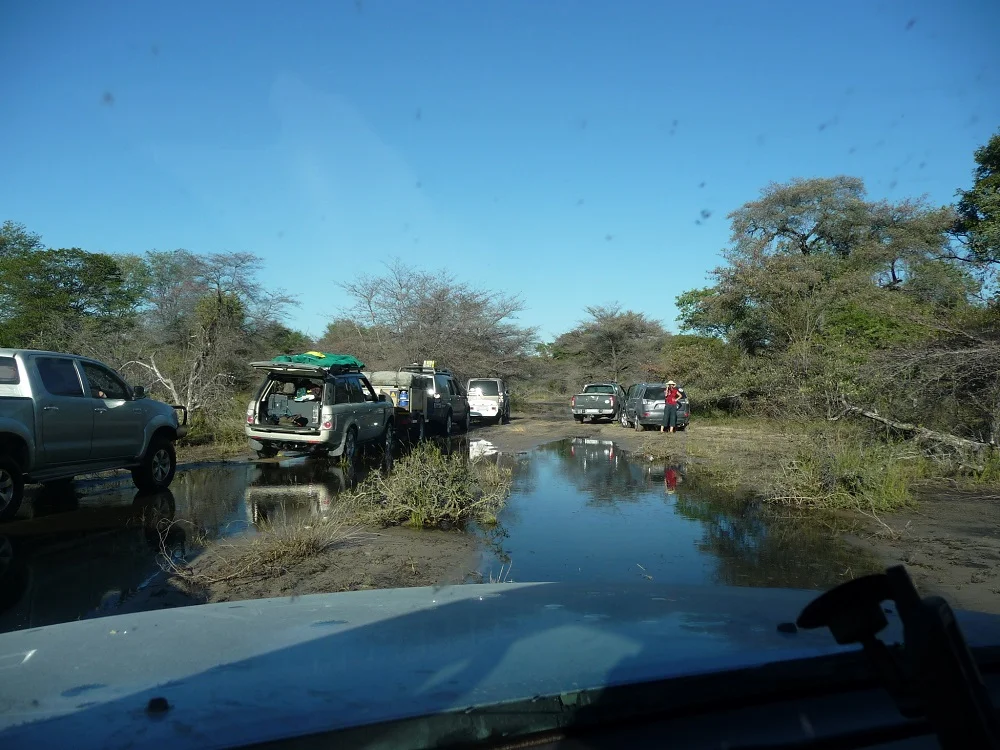
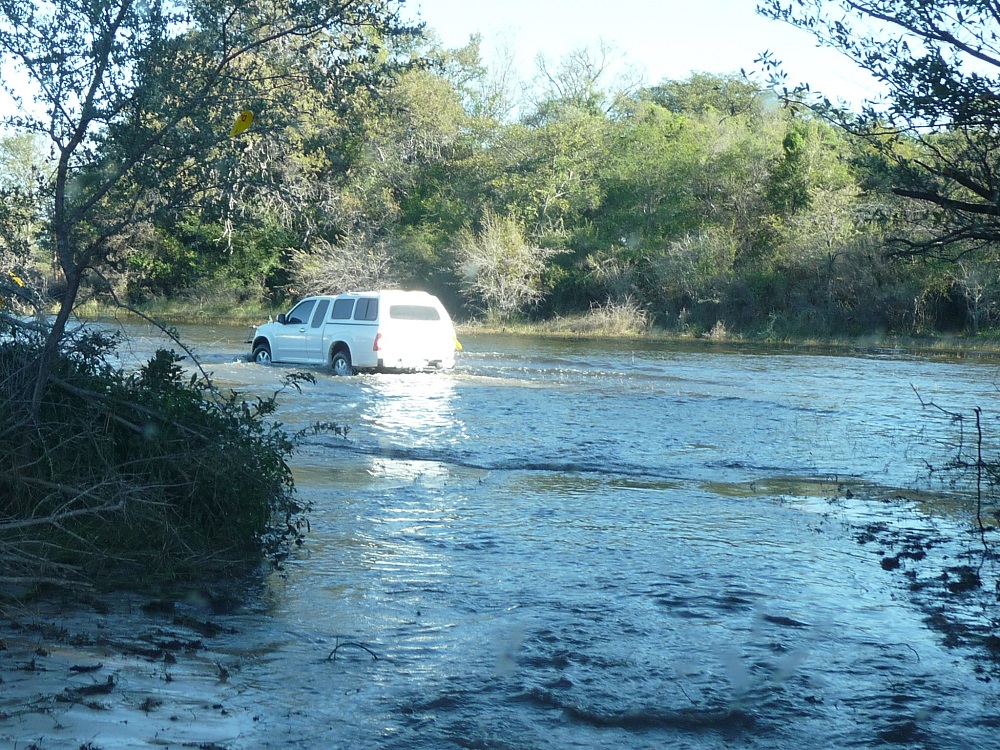
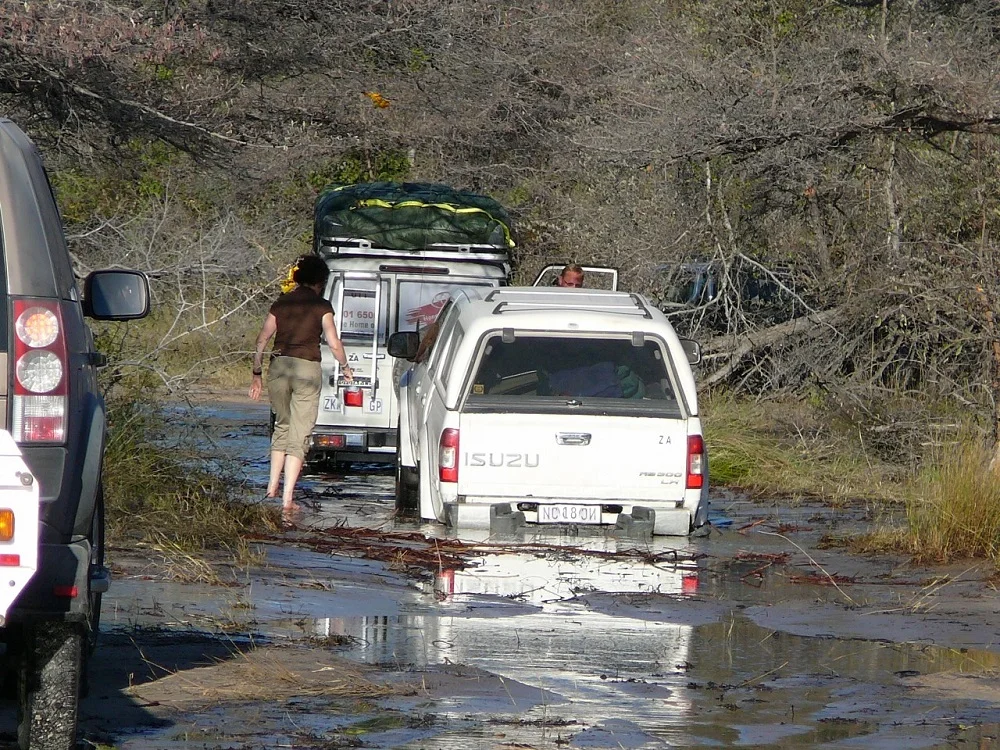

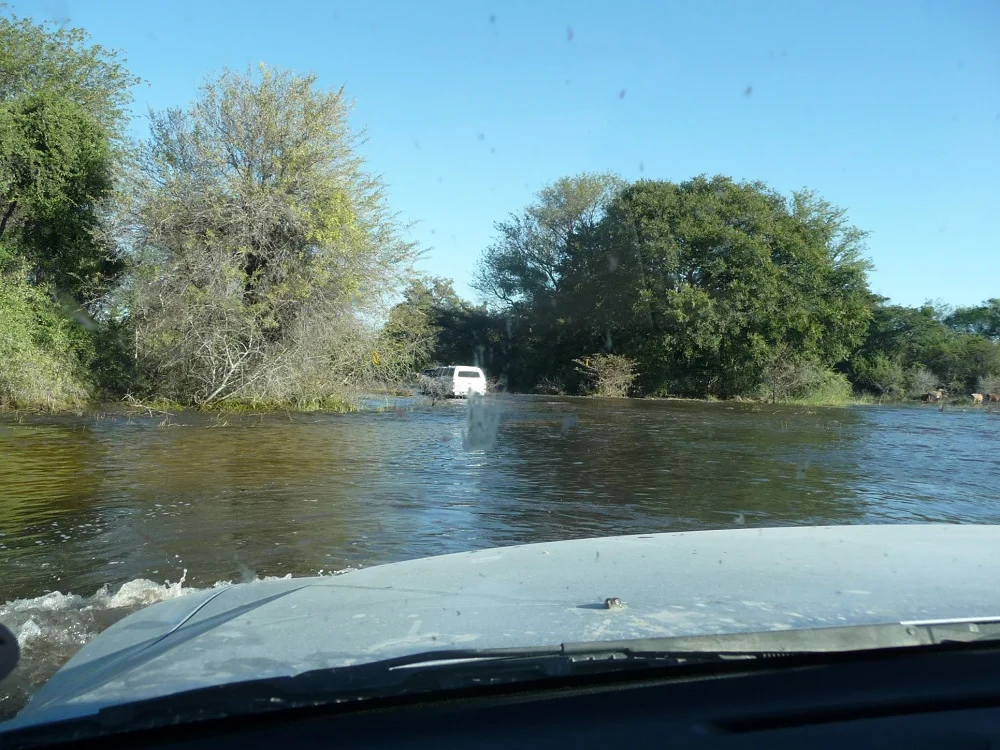
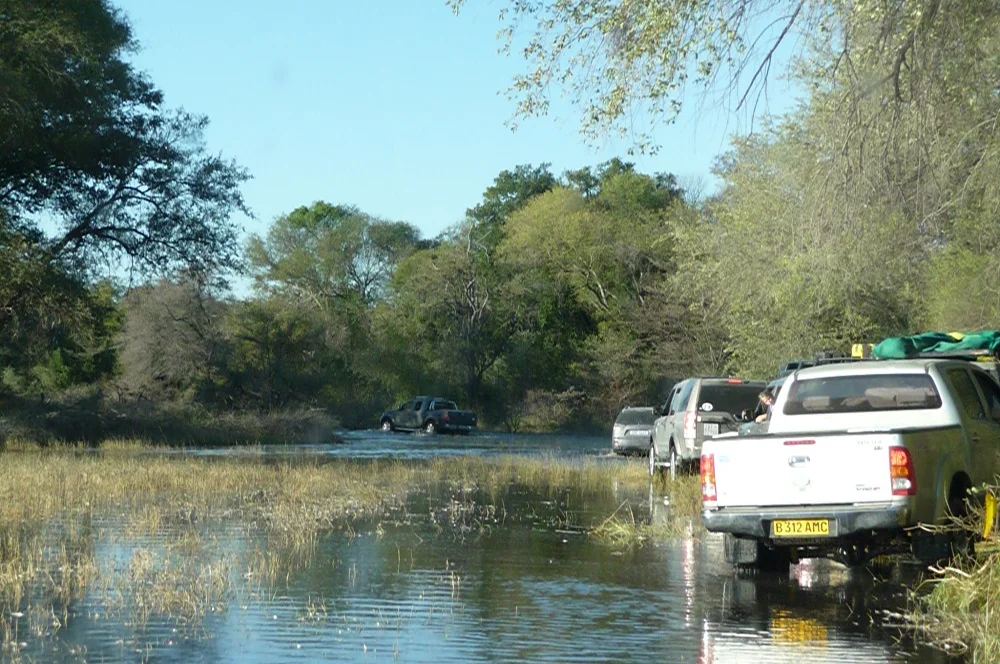
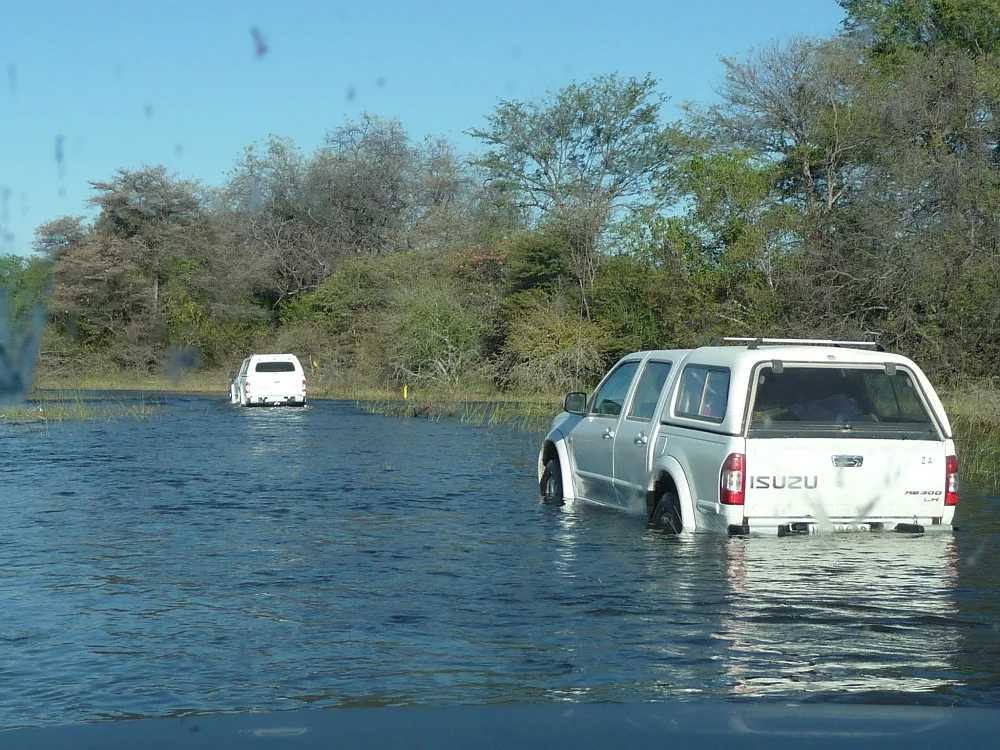
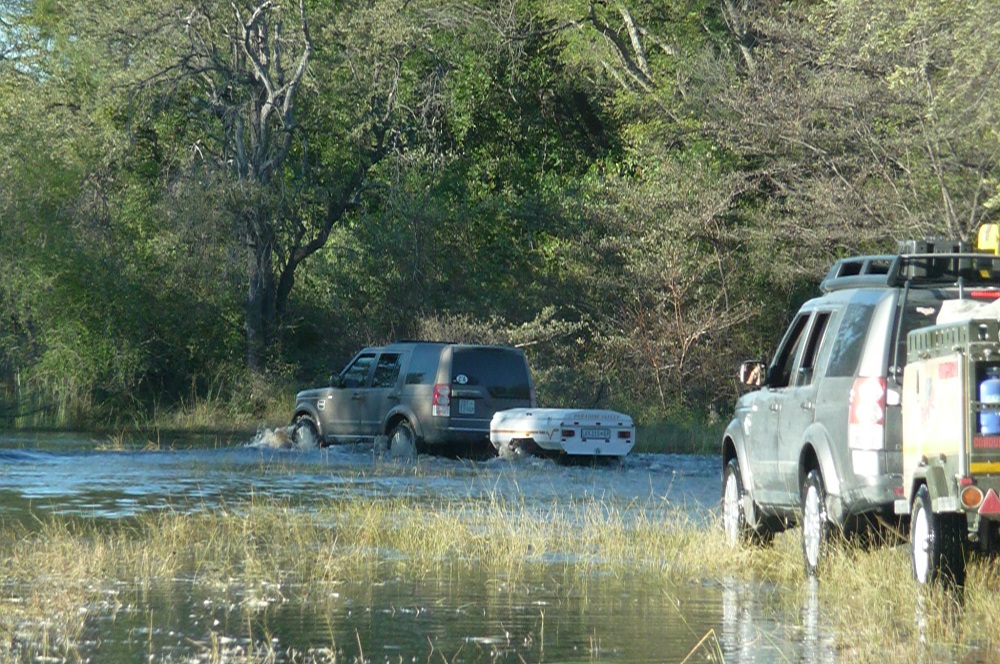
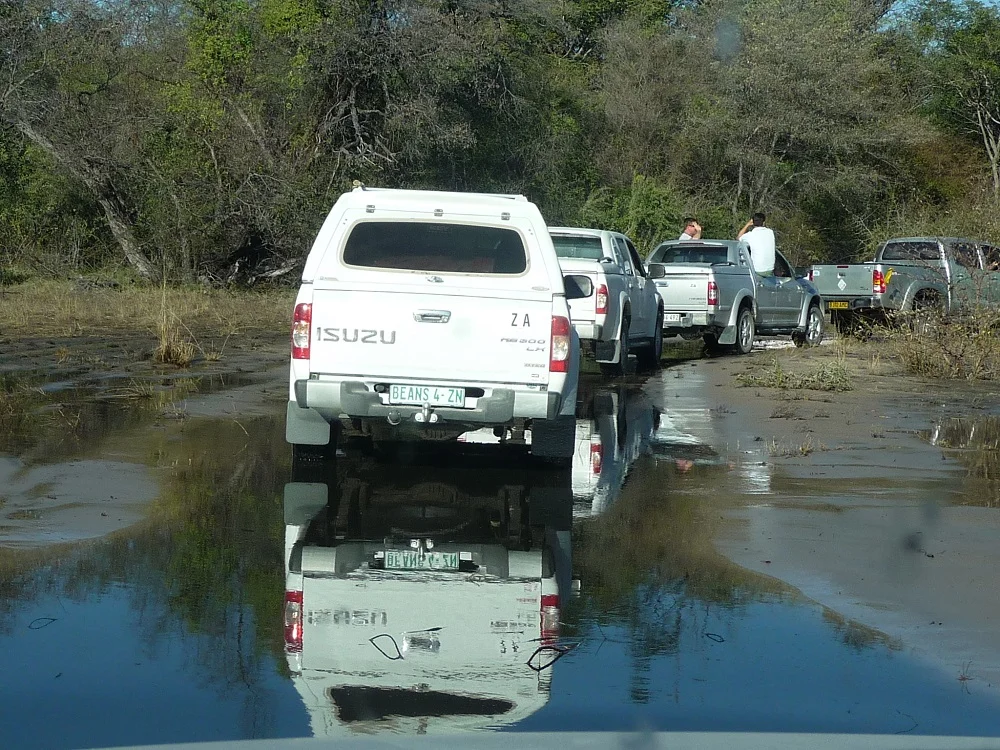



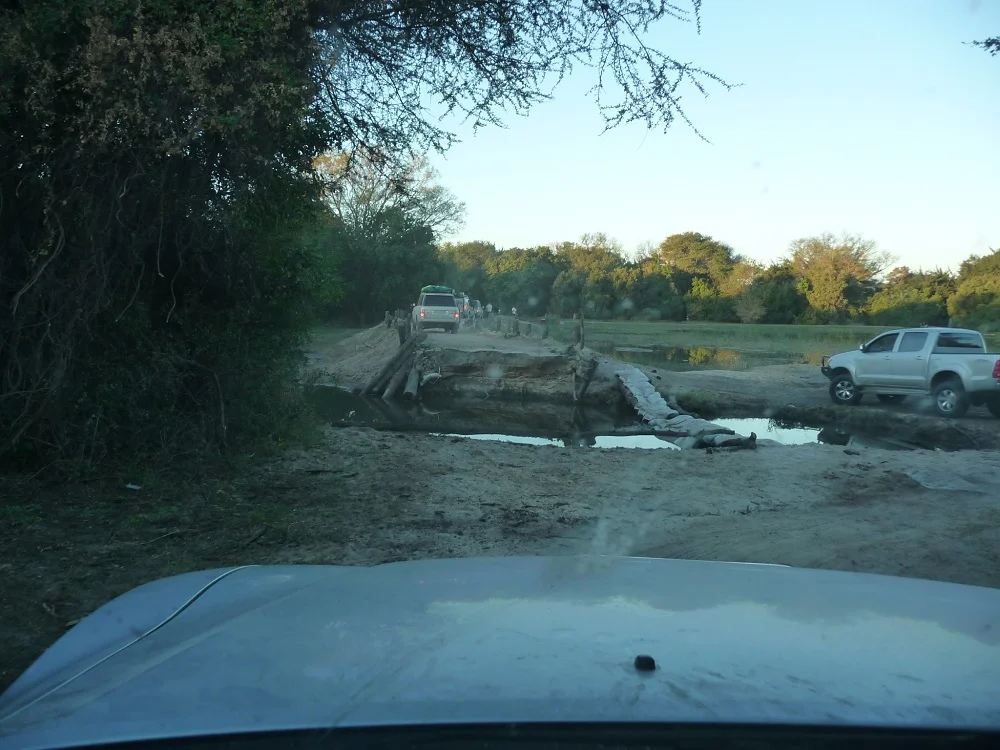
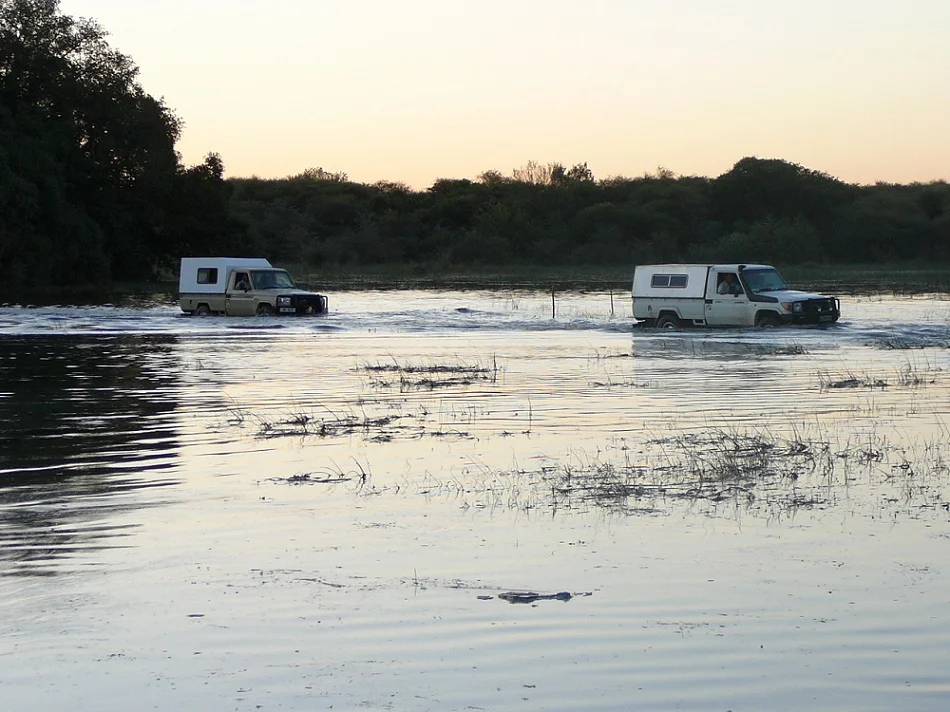

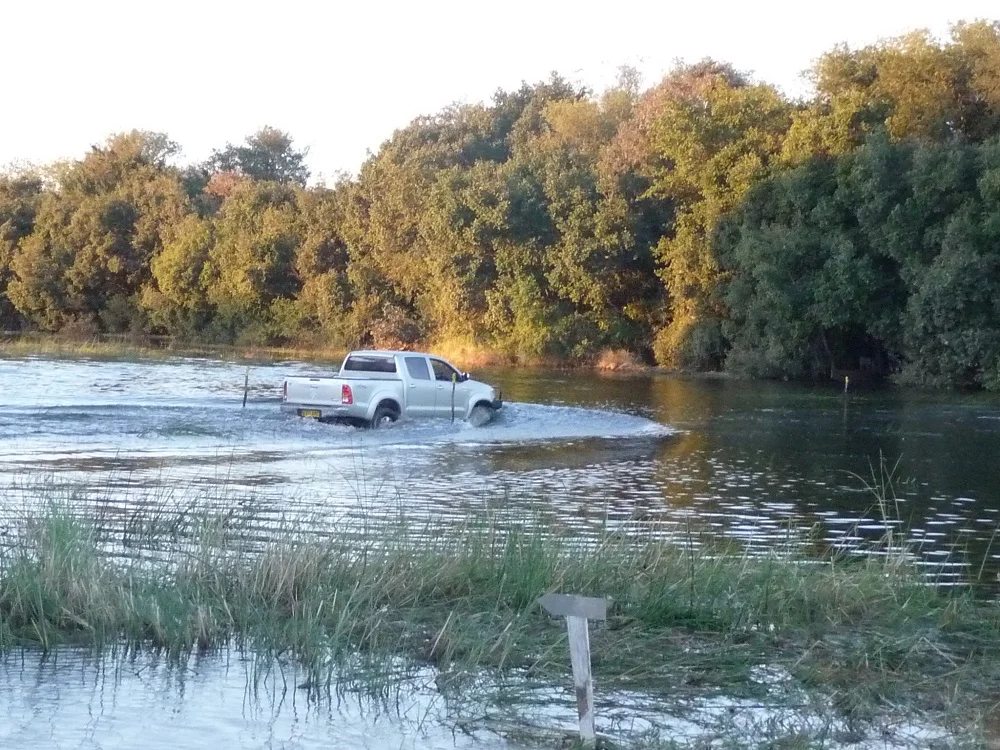
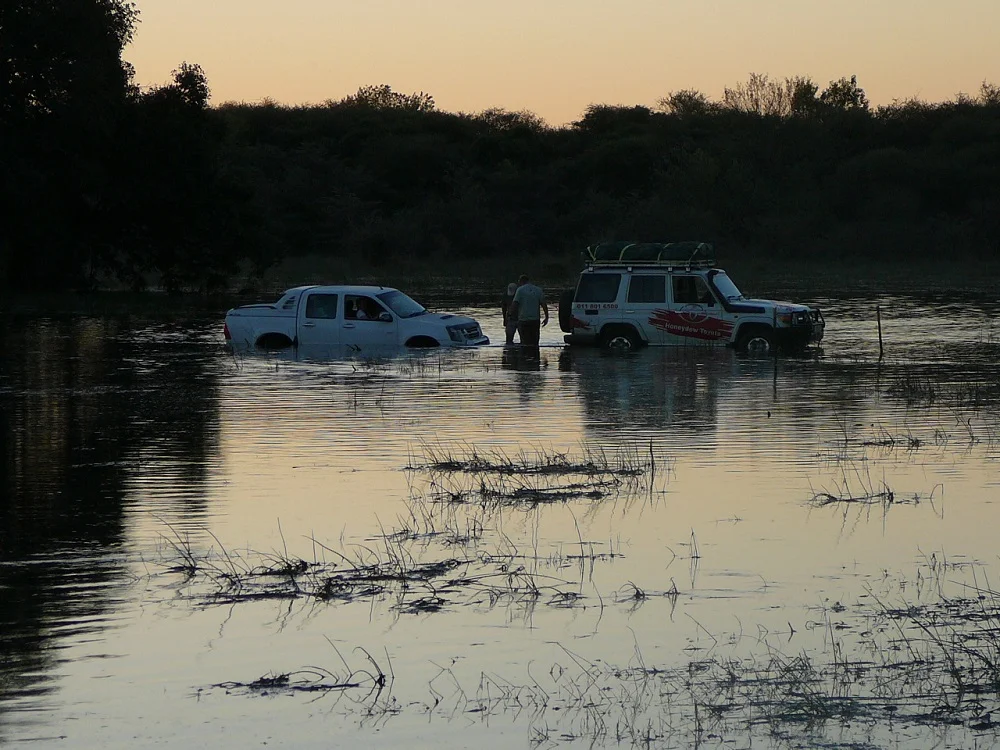
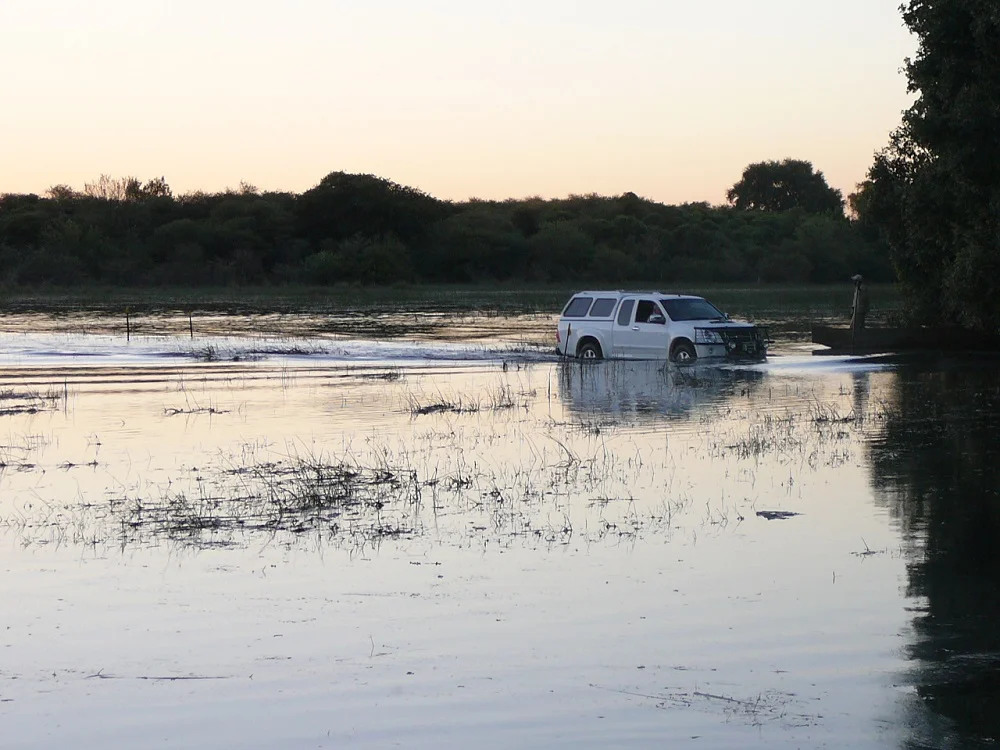
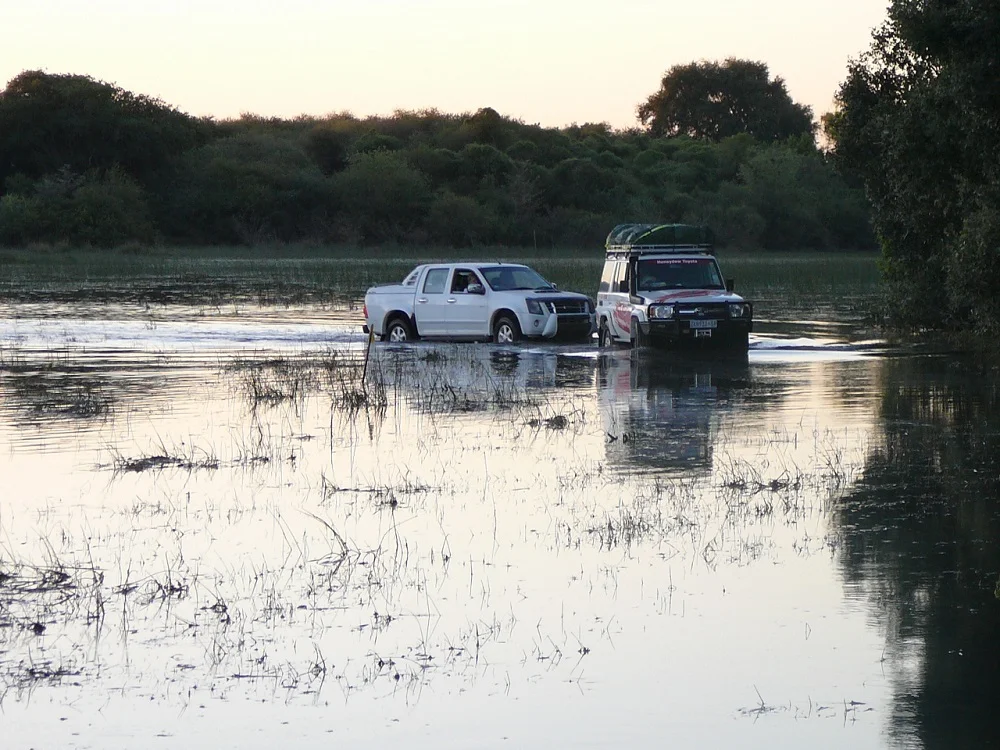
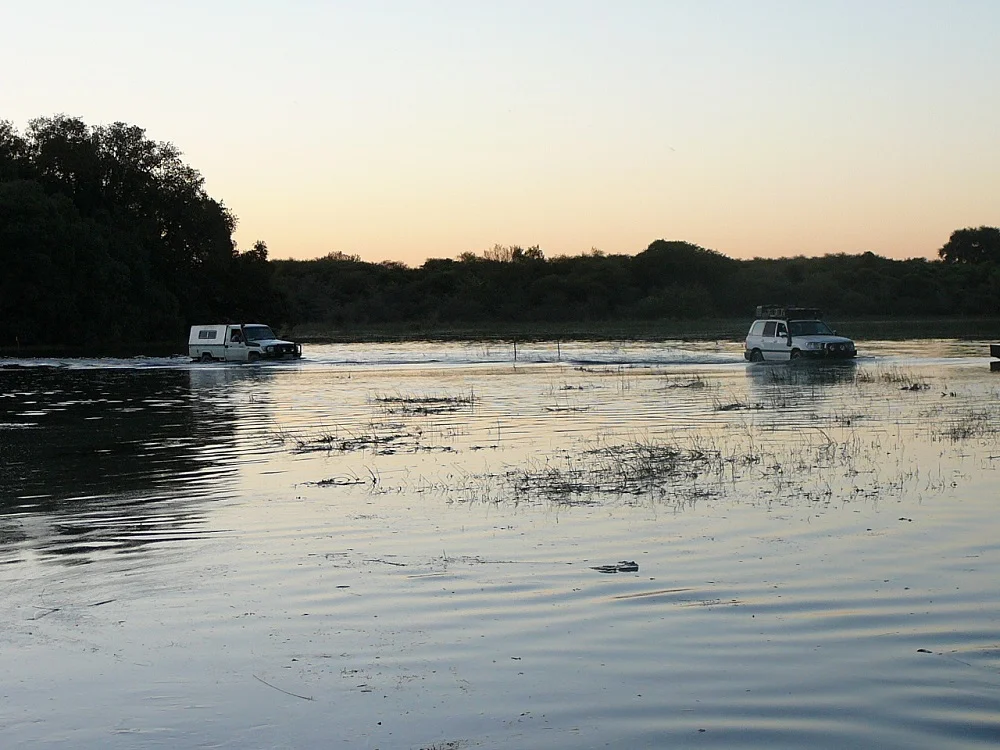
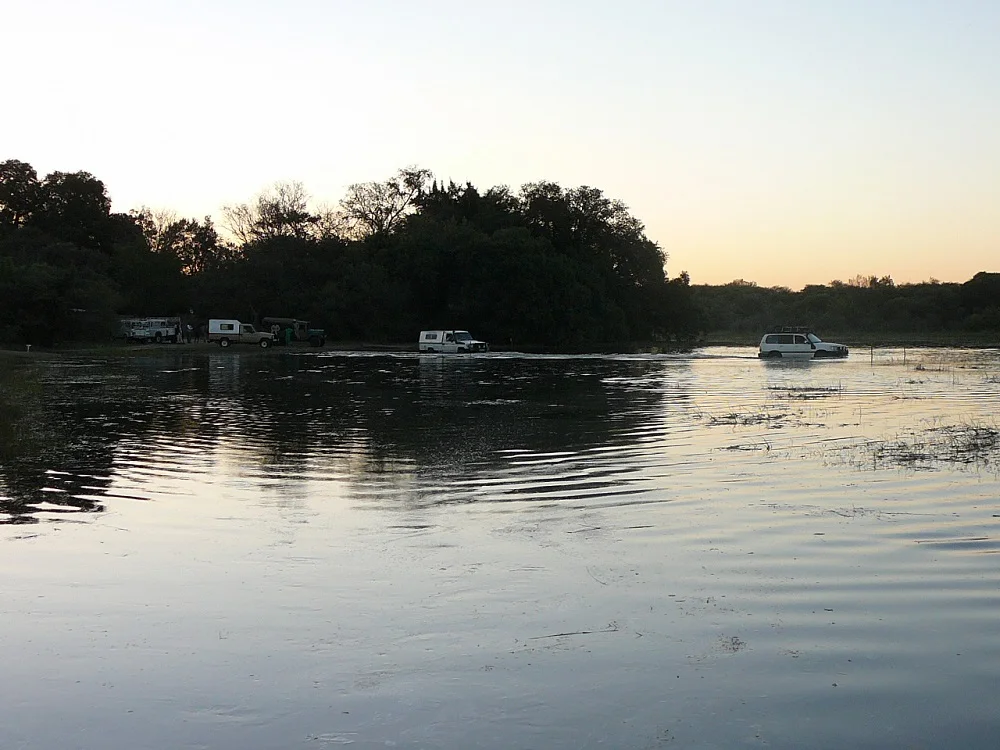
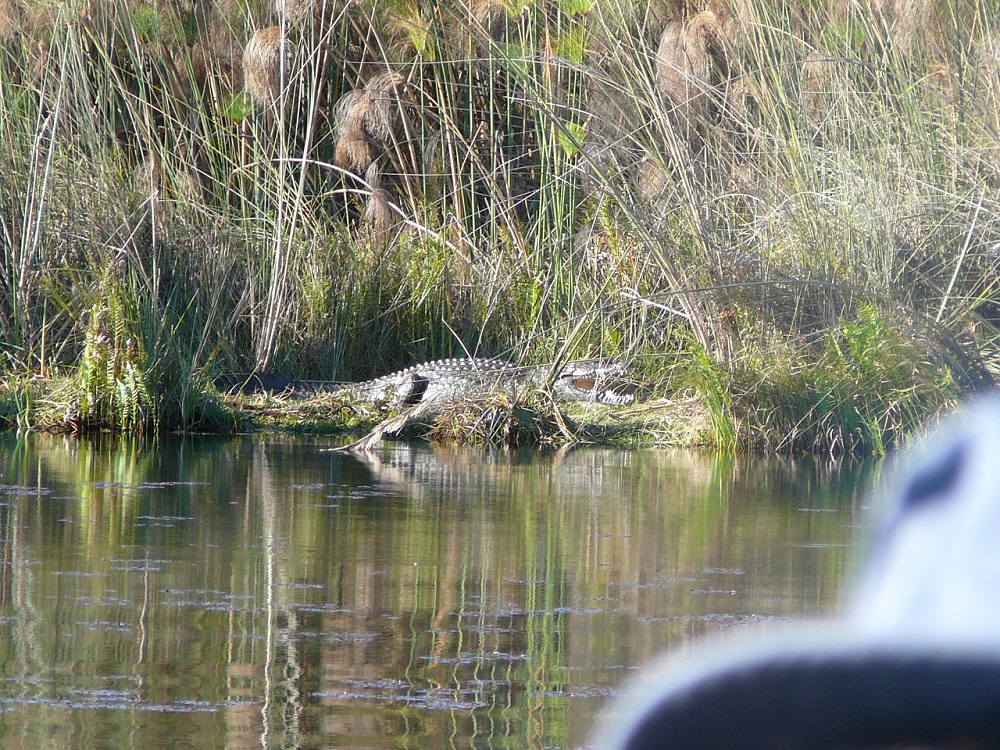
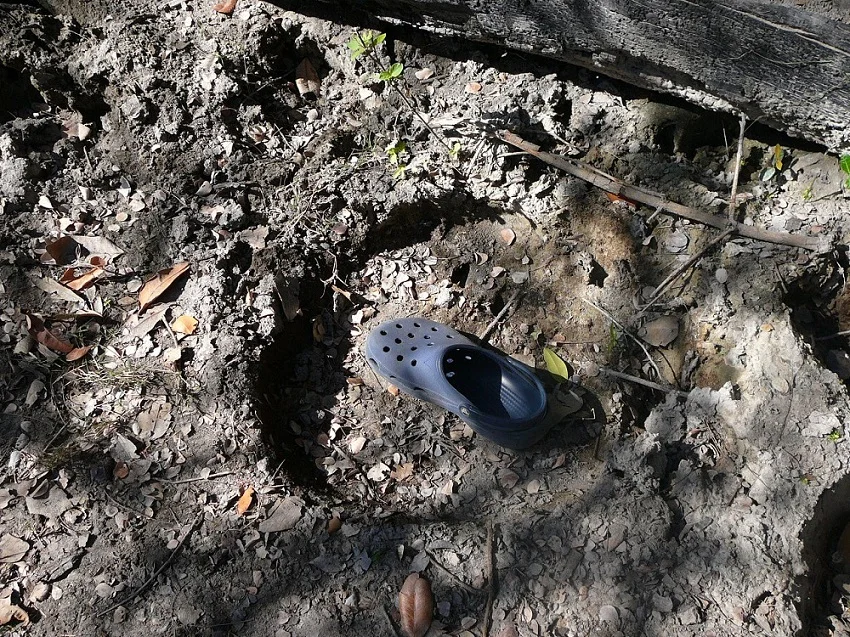

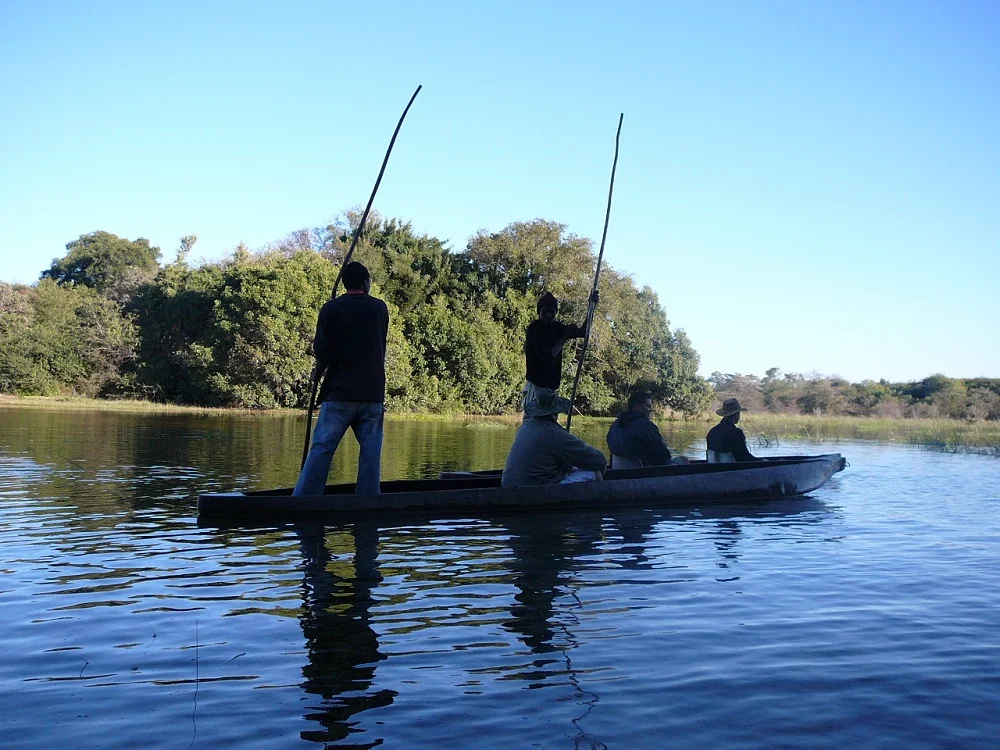
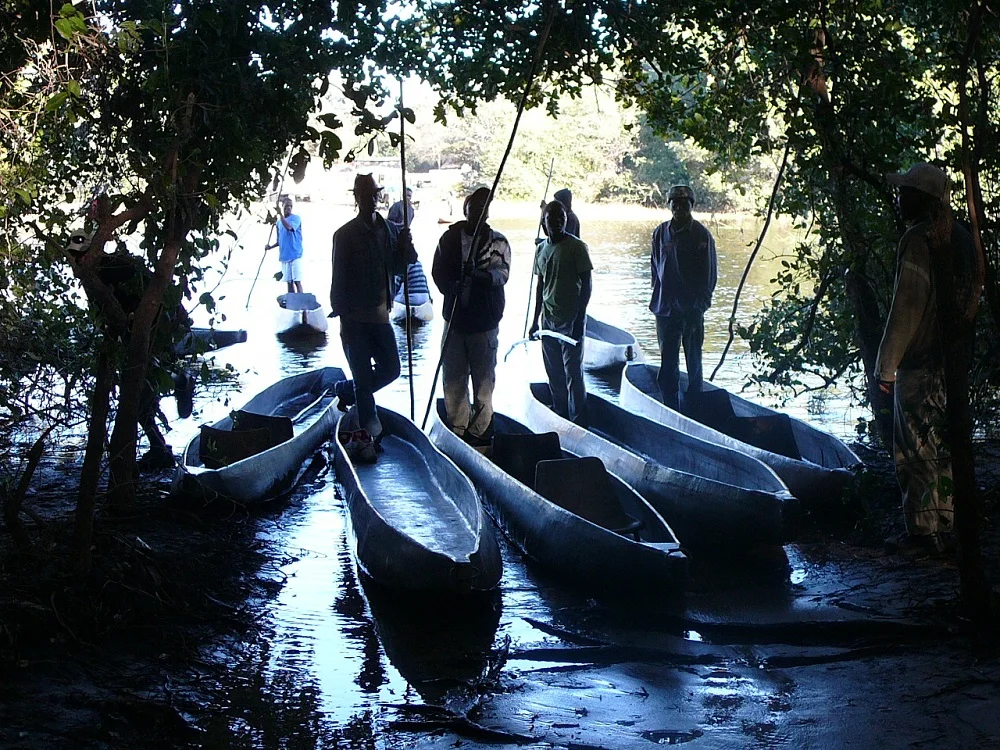




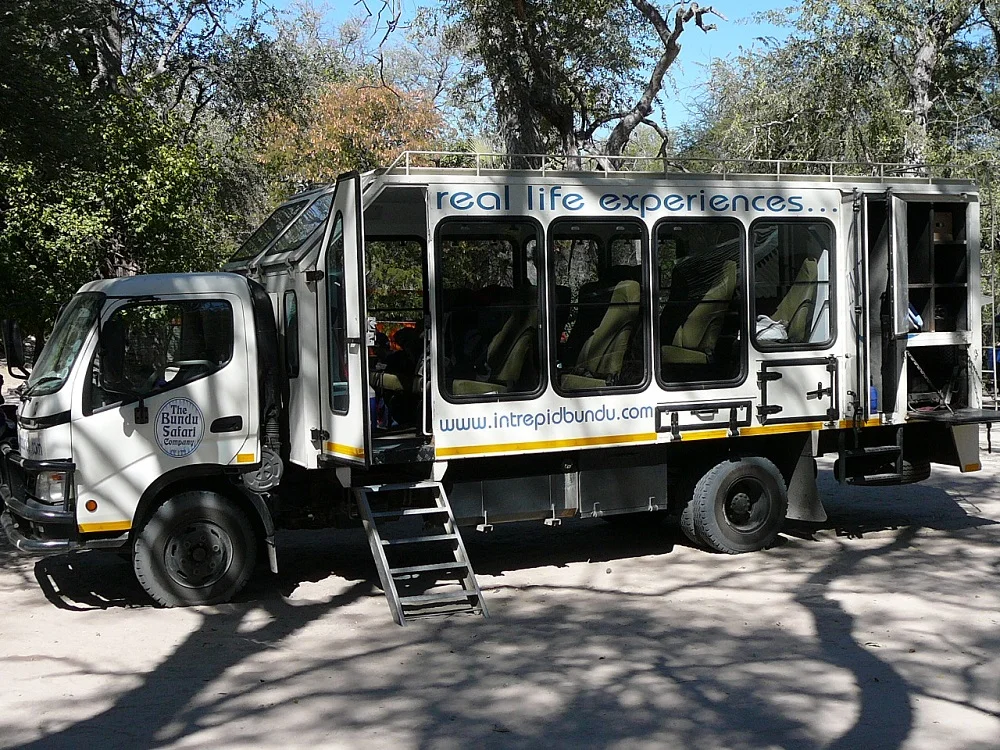
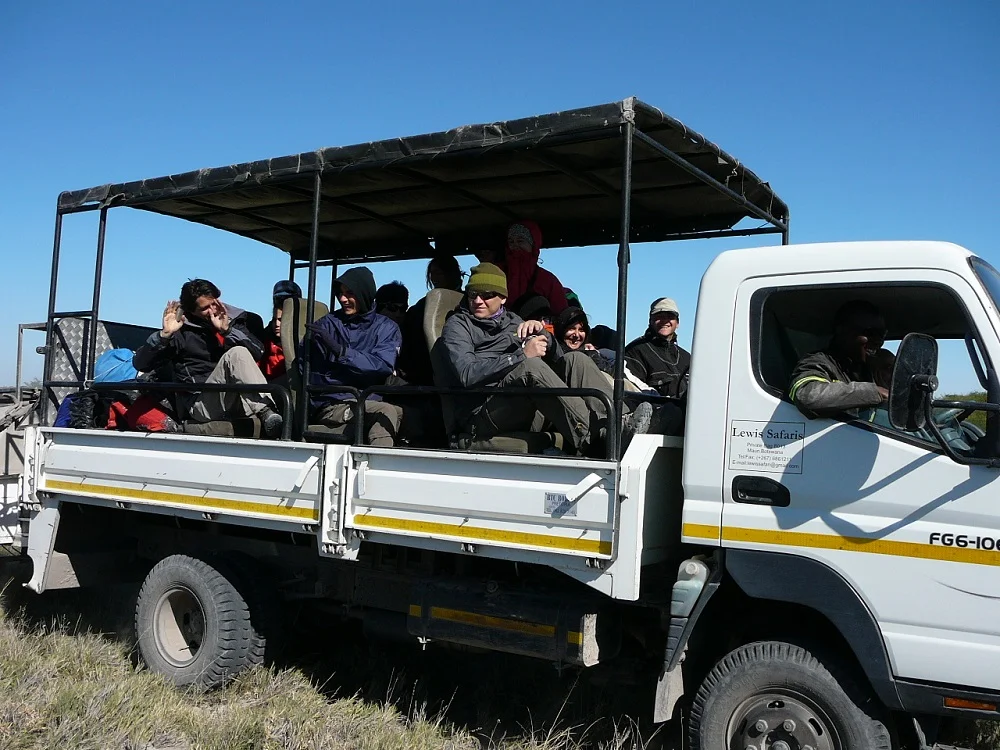



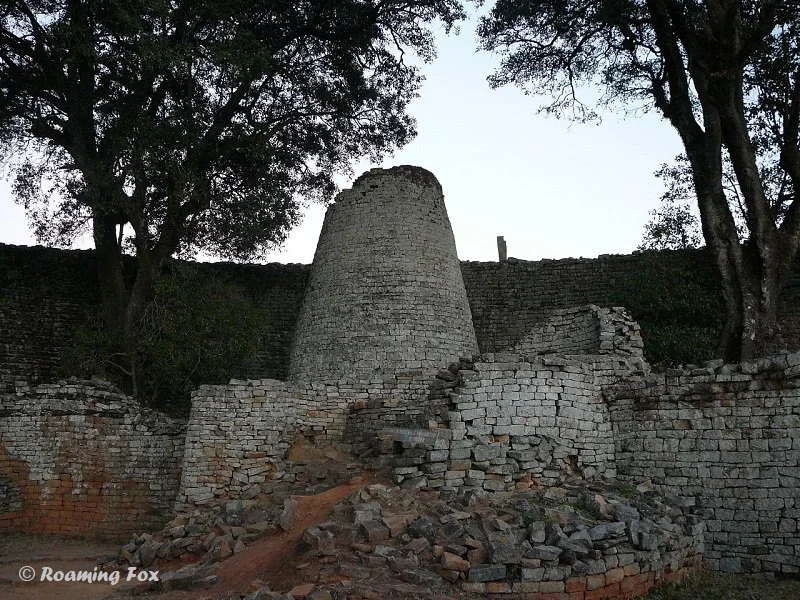

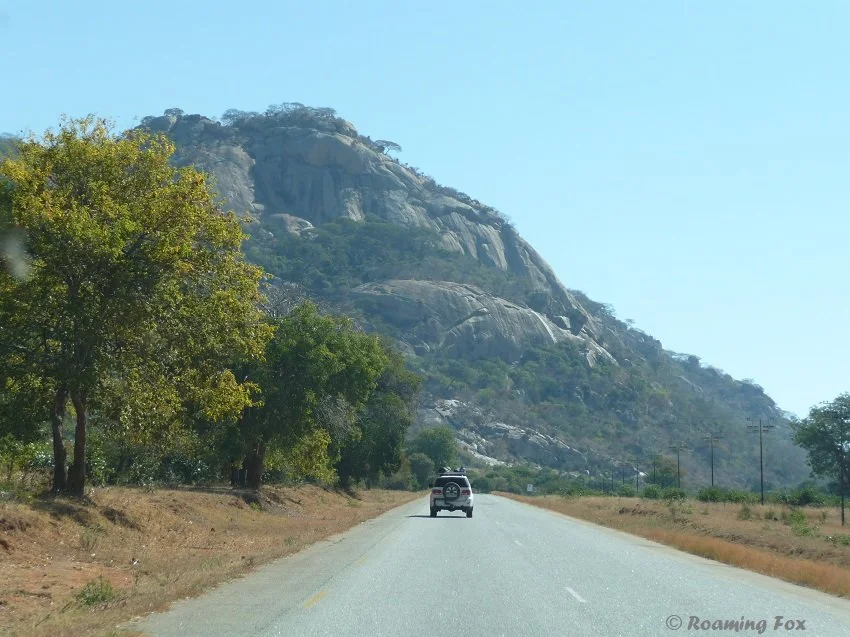





The Best Way to see a country? Take a road trip! Have you ever had that feeling when you hit the open road on your road trip? Freedom. Anticipation. Exhilaration.